Kelly Jensen's Blog, page 122
February 5, 2014
Tin Star by Cecil Castellucci
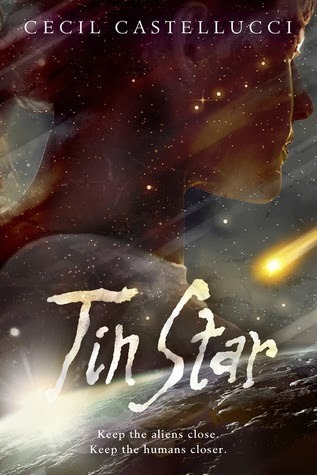 Have you ever watched Babylon 5? If you have:
Tin Star
is basically Babylon 5 for teens, if the Babylon 5 space station were nearly abandoned and hostile to humans rather than run by them. If you haven’t: you should really get on that.
Have you ever watched Babylon 5? If you have:
Tin Star
is basically Babylon 5 for teens, if the Babylon 5 space station were nearly abandoned and hostile to humans rather than run by them. If you haven’t: you should really get on that. OK, I’ll give you non-B5 fans a bit more. Our human protagonist, Tula, is left for dead on the Yertina Feray, a mostly-derelict space station in the middle of nowhere. Humans aren’t well-regarded there, and Tula has no safety net. This means she has no money to purchase food or other basic necessities. The law-keepers on the station (if they can be called that) aren’t predisposed to be understanding of her predicament, especially since her story doesn’t check out with their sources.
Luckily – sort of – for Tula, she does find some sympathetic aliens, primarily one named Heckleck, an unsavory type who makes a living on the station by dealing on the black market – plus other not-strictly-legal business practices. She makes a home for herself in the underguts (basically B5’s Down Below), running errands for Heckleck. She learns to navigate this human-less world while trying to figure out what happened to her family, how to get off the station, and how to go about getting revenge on the person who put her in this situation.
And then humans arrive on the station, and she’s suddenly not alone. The humans are young, like her, and have motivations of their own. Tula must decide if her needs align with theirs – and again evaluate who she can trust.
There’s a lot here that I love. It’s so solidly scifi – set in space, chock full of aliens, lots of cool tech. And the aliens aren't mostly humanoid, either. They're sentient and strange (to our human sensibilities), and not just physically. The way they socialize isn't what you'd expect, for example. Creating aliens that don't act like humans in every way is difficult, so it's definitely commendable when an author is moderately successful at it.
Because the socialization among the aliens is different, because Tula is such an outsider, it makes the relationships between her and the aliens especially interesting. She constantly misunderstands what's being said to her. Things that would be easy to infer among humans are impossible to deduce among aliens. The relationship between Tula and an alien official on the space station who sympathizes with her is a good example of this - he's such a mystery for so many pages, so when a moment of clarity occurs, it's all the more gratifying for the reader as a result.
The relationship between Tula and Heckleck is equally interesting. Heckleck is not really a protector; he's out for himself and isn't afraid to do what it takes to survive in the underguts. But Tula affects him in some way. She learns to understand the unsaid things behind the things he says. In any book featuring interactions between humans and aliens, the author is always drawing parallels, however slight or unintended, with interactions between vastly different human cultures. Good SFF always makes us think more deeply about our own world, and I think Tin Star has a lot to offer in that area.
So there were definitely aspects that I liked. The humans' arrival, on the other hand, while integral to the plot, was a dull point for me. They simply weren't as interesting as the aliens on the station, and I never cared about their needs as much as I did Tula's and her alien acquaintances.
I also found the story, overall, to be a bit sketchy. By that I mean I wish all aspects of it were more fleshed-out. It's a fast-paced book - perhaps a bit too fast-paced. Perhaps Castellucci did her job of creating an interesting future too well, since I often wished she could have slowed down a bit and let us get to know it - and its denizens - better. Characters are interesting but stop just short of being living and breathing. I didn't feel completely absorbed in the space station, either (in my mind's eye it just looks like Babylon 5).
Would I read a sequel? Absolutely. It would give me more of the depth and details that I want, plus Castellucci doesn't wrap everything up at the end. I do want to know more of Tula's story.
Hand Tin Star to readers who want fast-paced science fiction and who may be tired of dystopian and post-apocalyptic stories. It may suit fans of other stories set in space, such as Amy Kathleen Ryan's Glow or Beth Revis' Across the Universe, though both those titles feel more intense and dystopian-esque than Castellucci's book (the fate of humankind is not really at stake here). Christian Schoon's Zenn Scarlett is more similar in tone and features some creative alien life as well.
Tin Star will be published February 25. A review copy was provided by the publisher.







 Related StoriesWhen I Was The Greatest by Jason ReynoldsEye-Focused Covers in 2014A Year in Committee Life
Related StoriesWhen I Was The Greatest by Jason ReynoldsEye-Focused Covers in 2014A Year in Committee Life
Published on February 05, 2014 22:00
February 4, 2014
Eye-Focused Covers in 2014
A couple of years ago, Kimberly talked about a trend she'd noticed on covers. Back in the days of girls in long dresses, she pointed out the single eye trend, where YA covers got just one eye looking out or up or away from the reader. I thought it would be worth pointing out that this trend hasn't slowed down and it's possible that the single eye on a cover trend is even stronger in 2014.
Here's a roundup of YA books featuring an eye on the cover, along with a description from WorldCat. If you know of others, I'd love to know. These are books that are coming out in 2014, and knowing there are still some covers yet to be revealed for the year, I suspect we might see another single eye or two before year's end. I bet if you pulled all of these books together you could make a real eye-catching display of books (I know, I know).
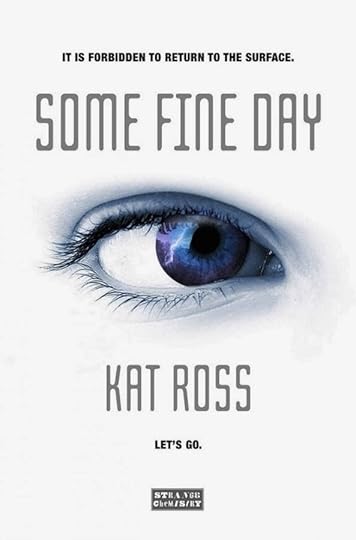

Some Fine Day by Kat Ross (July): Sixteen-year-old Jansin Nordqvist is on the verge of graduating from the black ops factory known as the Academy. She's smart and deadly, and knows three things with absolute certainty: 1. When the world flooded and civilization retreated deep underground, there was no one left on the surface. 2. The only species to thrive there are the toads, a primate/amphibian hybrid with a serious mean streak. 3. There's no place on Earth where you can hide from the hypercanes, continent-sized storms that have raged for decades. Jansin has been lied to. On all counts. (description via Goodreads).
Tabula Rasa by Kristen Lippert-Martin (September): A girl who has been held in an experimental medical facility to remove the memories that gave her post-traumatic stress disorder begins to recover her memory after fleeing mercenaries sent to eliminate her.
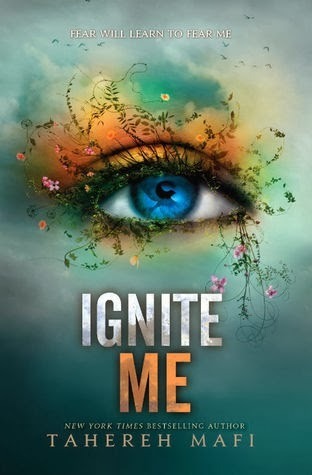
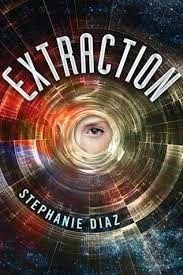
Ignite Me by Tahereh Mafi (February): With Omega Point destroyed, Juliette doesn't know if the rebels, her friends, or even Adam are alive. But that won't keep her from trying to take down The Reestablishment once and for all. Now she must rely on Warner, the handsome commander of Sector 45. The one person she never thought she could trust. The same person who saved her life. He promises to help Juliette master her powers and save their dying world ... but that's not all he wants with her.
Extraction by Stephanie Diaz (July): Clementine has spent her whole life preparing for her sixteenth birthday, when she’ll be tested for Extraction in the hopes of being sent from the planet Kiel’s toxic Surface to the much safer Core, where people live without fear or starvation. When she proves Promising enough to be “Extracted,” she must leave without Logan, the boy she loves. Torn apart from her only sense of family, Clem promises to come back and save him from brutal Surface life. What she finds initially in the Core is a utopia compared to the Surface—it’s free of hard labor, gun-wielding officials, and the moon's lethal acid. But life is anything but safe, and Clementine learns that the planet's leaders are planning to exterminate Surface dwellers—and that means Logan, too. Trapped by the steel walls of the underground and the lies that keep her safe, Clementine must find a way to escape and rescue Logan and the rest of the planet. But the planet leaders don't want her running—they want her subdued. (Description via Goodreads).
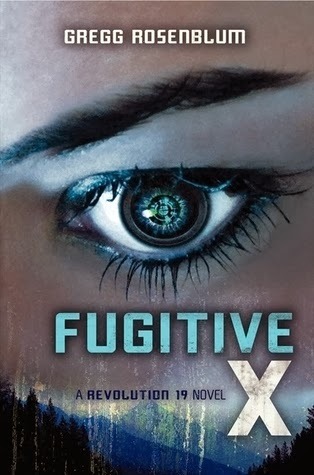

Fugitive X by Gregg Rosenblum (available now): s a war between robots and humans looms on the horizon, Nick, Kevin, and Cass continue to battle the bots that enslaved humanity--but when they are separated, they must fight the war on their own.
Gasp by Lisa McMann (June): After narrowly surviving two harrowing tragedies, Jules now fully understands the importance of the visions that she and people around her are experiencing. She’s convinced that if the visions passed from her to Sawyer after she saved him, then they must now have passed from Sawyer to one of the people he saved. That means it’s up to Jules to figure out which of the school shooting survivors is now suffering from visions of another crisis. And once she realizes who it is, she has to convince that survivor that this isn't all crazy—that the images are of something real. Something imminent. As the danger escalates more than ever before in the conclusion to the Visions series, Jules wonders if she'll finally find out why and how this is happening—before it's too late to prevent disaster. (Description via Goodreads).
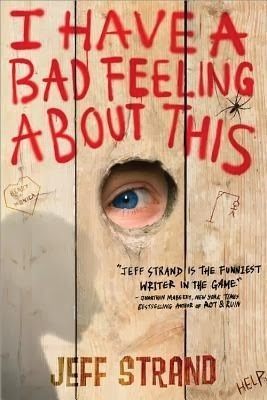
I Have A Bad Feeling About This by Jeff Strand (March): A Hunger Games-style survival school for teens is about to get deadly serious... or seriously deadly. Take your pick. Henry Lambert is a skinny, completely non-athletic sixteen-year-old who would much rather stay inside playing video games than do anything that requires interacting with nature.






 Related StoriesYA Reissue Cover Makeovers -- Updating for New Readerships2014 YA Cover Trends: A Look at What's to Come, Part 2Hardcover to Paperback: Six YA Book Makeovers to Consider
Related StoriesYA Reissue Cover Makeovers -- Updating for New Readerships2014 YA Cover Trends: A Look at What's to Come, Part 2Hardcover to Paperback: Six YA Book Makeovers to Consider
Here's a roundup of YA books featuring an eye on the cover, along with a description from WorldCat. If you know of others, I'd love to know. These are books that are coming out in 2014, and knowing there are still some covers yet to be revealed for the year, I suspect we might see another single eye or two before year's end. I bet if you pulled all of these books together you could make a real eye-catching display of books (I know, I know).


Some Fine Day by Kat Ross (July): Sixteen-year-old Jansin Nordqvist is on the verge of graduating from the black ops factory known as the Academy. She's smart and deadly, and knows three things with absolute certainty: 1. When the world flooded and civilization retreated deep underground, there was no one left on the surface. 2. The only species to thrive there are the toads, a primate/amphibian hybrid with a serious mean streak. 3. There's no place on Earth where you can hide from the hypercanes, continent-sized storms that have raged for decades. Jansin has been lied to. On all counts. (description via Goodreads).
Tabula Rasa by Kristen Lippert-Martin (September): A girl who has been held in an experimental medical facility to remove the memories that gave her post-traumatic stress disorder begins to recover her memory after fleeing mercenaries sent to eliminate her.


Ignite Me by Tahereh Mafi (February): With Omega Point destroyed, Juliette doesn't know if the rebels, her friends, or even Adam are alive. But that won't keep her from trying to take down The Reestablishment once and for all. Now she must rely on Warner, the handsome commander of Sector 45. The one person she never thought she could trust. The same person who saved her life. He promises to help Juliette master her powers and save their dying world ... but that's not all he wants with her.
Extraction by Stephanie Diaz (July): Clementine has spent her whole life preparing for her sixteenth birthday, when she’ll be tested for Extraction in the hopes of being sent from the planet Kiel’s toxic Surface to the much safer Core, where people live without fear or starvation. When she proves Promising enough to be “Extracted,” she must leave without Logan, the boy she loves. Torn apart from her only sense of family, Clem promises to come back and save him from brutal Surface life. What she finds initially in the Core is a utopia compared to the Surface—it’s free of hard labor, gun-wielding officials, and the moon's lethal acid. But life is anything but safe, and Clementine learns that the planet's leaders are planning to exterminate Surface dwellers—and that means Logan, too. Trapped by the steel walls of the underground and the lies that keep her safe, Clementine must find a way to escape and rescue Logan and the rest of the planet. But the planet leaders don't want her running—they want her subdued. (Description via Goodreads).


Fugitive X by Gregg Rosenblum (available now): s a war between robots and humans looms on the horizon, Nick, Kevin, and Cass continue to battle the bots that enslaved humanity--but when they are separated, they must fight the war on their own.
Gasp by Lisa McMann (June): After narrowly surviving two harrowing tragedies, Jules now fully understands the importance of the visions that she and people around her are experiencing. She’s convinced that if the visions passed from her to Sawyer after she saved him, then they must now have passed from Sawyer to one of the people he saved. That means it’s up to Jules to figure out which of the school shooting survivors is now suffering from visions of another crisis. And once she realizes who it is, she has to convince that survivor that this isn't all crazy—that the images are of something real. Something imminent. As the danger escalates more than ever before in the conclusion to the Visions series, Jules wonders if she'll finally find out why and how this is happening—before it's too late to prevent disaster. (Description via Goodreads).

I Have A Bad Feeling About This by Jeff Strand (March): A Hunger Games-style survival school for teens is about to get deadly serious... or seriously deadly. Take your pick. Henry Lambert is a skinny, completely non-athletic sixteen-year-old who would much rather stay inside playing video games than do anything that requires interacting with nature.







 Related StoriesYA Reissue Cover Makeovers -- Updating for New Readerships2014 YA Cover Trends: A Look at What's to Come, Part 2Hardcover to Paperback: Six YA Book Makeovers to Consider
Related StoriesYA Reissue Cover Makeovers -- Updating for New Readerships2014 YA Cover Trends: A Look at What's to Come, Part 2Hardcover to Paperback: Six YA Book Makeovers to Consider
Published on February 04, 2014 22:00
February 3, 2014
A Year in Committee Life
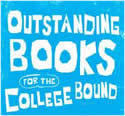
As I mentioned a few times over the last year, in 2013, I served on YALSA's Outstanding Books for the College Bound (OBCB) committee. It's a committee that is put together every five years and it's comprised of primarily YALSA members, but it includes a handful of academic librarians from the ACRL division, as well. Since my committee is an open committee and I don't have to keep things secret to the grave (unlike many of the awards committees), I thought it would be worthwhile to talk about the highs and lows of the experience, as well as discuss some of the things I learned about what it means to serve on a book committee.
Our list is done and annotated, but as of this writing, it hasn't yet been posted to the YALSA site. As soon as it is, I'll come back and link up to it. Spoiler: you'll learn maybe one title we picked in this post.
OBCB's Structure
First, a little background into how OBCB works.
Unlike many of the other committees, which focus on the books published in the past year, OBCB's only requirement is that a book be "widely available." There are no publication date rages, no content requirements, and no set of standard rules by which we have to follow. This means that we can include fiction and non-fiction, adult and young adult, graphic and non-graphic titles, and they can be published within any time frame. In many ways, that wide a window is amazing and freeing: anything is eligible for the list. But at the same time, that wide a window is horrifying: anything is eligible for the list.
The very first thing we did in discussion back last winter was decide how we wanted to structure the list itself. We can have up to 125 titles, and they can be hashed out in a number of different manners. We chose to keep the structure as it had been in 2009, with five categories that mirrored the liberal arts. Each member of our committee then selected two of those categories to become a member of, which meant reading and discussing titles relevant to that category (though we were able to nominate for any category). I chose personally to be a member of arts and humanities, as well as social science. My background is in psychology and writing, so those both seemed like natural fits, and both are categories I was most interested in.
Unlike many other committees, OBCB does not receive books from the publishers. It's our job to do the searching and hunting for titles and to nominate, read, and discuss them as we do. But the very first thing we had to do was read the titles from the prior list -- we treated the 125 titles from 2009 as vetted nominations. Since we each had responsibility for two categories, that amounted to 50 titles we had to read right off the bat.
I should back up a second and explain that OBCB changed this year. What used to be a two-year committee shifted into a one-year committee, a decision that, though we were able to work with, I think was a poor decision to make. It created a huge time crunch and impacted the number of nominations we received and could discuss.
The end goal of OBCB is to develop a list that exposes college bound and life long learners to a wide range of titles, stories, worlds, and experiences to excite and ignite their interests and passions. It's not meant to be a rehashing of the Canon. Those lists are everywhere. This is instead meant to broaden their minds and thinking.
A Year of Tireless Reading
One of the biggest things I rediscovered this year is how different reading adult non-fiction is from reading YA fiction. I've always enjoyed adult non-fiction, but it requires an entirely different reading mindset than YA fiction -- or even adult fiction -- does. It's much more intense, and I learned that I really do require engagement within the first fifty pages of a non-fiction title. If I can't get that, I'm going to check out and feel a bit resentful about the experience. And actually, really discovering this about myself this year was immensely helpful in working on the committee because it forced me to consider whether it was me or whether it was the book causing the issue. In a couple of cases, a book I
ended up giving up on early was still a book I voted for at our final meeting because I knew it was me who didn't love the book, not that the book wasn't a right fit for the list.
Beyond reading the 50 titles that were already on the list, this committee required nominating books that weren't already being considered. That meant more reading beyond the list in a variety of categories. At the first meeting we had in the summer at ALA Annual, we talked about holes we saw within our various categories that perhaps we should be looking into, which helped guide a bit of the reading. We talked about updating certain titles with fresher takes on the topic or which might simply be better presentations of the topic at hand.
I made sure not only to be reading new stuff, but I also thought a lot about the things I had read in the past which might make interesting additions to the list; though, to be fair, much of my work in nominating was not only about books I thought would be good to have on the list, but also books I thought would be good to DISCUSS in regards to the list. In other words, not everything I nominated I knew would be a slam dunk. I wanted to have some discourse. That would help suss out topical issues, as well as issues relating to putting forward fiction over non-fiction titles and so forth. I suspect other people on the committee did a bit of this as well, particularly when we reached the end of our open nomination period.
Nominations were read as they came in. Any nomination from a member of the committee, regardless of whether they were working on a particular category, was considered a vetted nomination and required no second. Any titles suggested from people outside the committee required a second to be considered, and while we had some field suggestions, there weren't a whole lot, and most of them were indeed seconded. Again, partially because they would be good fits without question and partially because they would be worth at least bringing to the table to talk.
Five to six people sat on each of the category lists, and when a book received a fair number of "no" marks on our spreadsheet, others were free to ignore it. Titles which received "maybe" and "yes" marks were made into priorities on the sheet. This helped in whittling down reading work and helping toward seeing what was and wasn't working so far.
In terms of take aways from the reading portion of the committee experience, the biggest was learning how to schedule reading time into my daily life. It meant skipping out on fun reading at times for a committee read and it meant becoming very judicious in my use of the 50-page rule. Sometimes I knew a book wouldn't be a go and other times, I knew at 50 pages it was a strong contender so I could make the choice in either case to stop or keep pushing forward.
Committee Discussion
One thing that was kind of a surprise for me was how little we discussed titles throughout the year. Most people were so focused on reading that discussion fell to the wayside. And while that was understandable in some cases, at other times I had a really hard time putting an idea or discussion point out and hearing silence. More than anything, it made me worry what meetings at Midwinter would look like, when we were scheduled for hours and hours of time in the same room to hash out what our lists would look like.
With so little discussion, it was difficult to talk about how we wanted our lists to ultimately look. Did we want a lot of fiction or non-fiction? Did we need balance? What were we missing and what did we have too much of?
Fortunately, those things worked themselves out at the meetings. And even when books were hard to acquire, there were reasons for it, and members of the committee did a great job talking about why a book that might not be in 500 libraries still needs to be considered (while "widely available" is our only criteria for this committee, some formats, like graphic novels, are by their nature LESS widely available than novels are).
Midwinter Decision Making
What you really probably want to know are the dirty details of how these meetings go down, and I'm happy to provide a glimpse into some stuff because if I learned anything about this experience, it's that committee work is committee work and follows its own set of rules and standards which are not rules nor standards. Instead, it's about the discussion at the table, about impassioned case making, and at times, it IS about bargain making. No, money is never exchanged and favors aren't granted, but sometimes, you have to give up something in order to get something else, and whatever energy you put into something is what you walk away from it with. In other words, just because a book is not on a list doesn't mean it wasn't passionately discussed, debated, and considered.
It doesn't necessarily mean the books on the list are of a better quality or standard than others. It means a few things: it filled a nice hole in the list, it added to the diversity of the list, or it had a passionate champion or two who fought to get that book on the list. Sometimes, we had multiple books that explored a certain topic, and for the sake of having a list that was expansive, we decided to pick only one book of the many on that topic to be on the final list.
In my committee, not everyone was able to read all of the books (much of this has to do with the cutting of a year off our charge, I think), but that didn't mean people who didn't read the book didn't have a chance to vote for or against the book. That came down to how a discussion emerged and played out. There was at least one book I was never able to get -- a graphic novel -- that a fellow member of my committee made an excellent case for and thus convinced me to give it a yes.
There is a drawback, though, to people not all having read the books: when two people on a committee of six have read a title and four have not, and your loyalties are divided, it's tough to champion it or argue against it. One book, which I'd nominated for literature and languages (a category I was not on), had two readers on it. One loved the book and one did not. The book ultimately didn't end up on their list. But since it was a book I felt passionately about, as did another member of the committee, when the entirety of our group met later in the week, I brought it up for discussion again, and between the two of us, we rallied enough support to get it placed on the arts and humanities list. Conversely, a title nominated for social science that had two supporters, one person who didn't support it, and three people who hadn't read it ended up having the most heated discussion -- and ultimately did not end up on any list.
Which is to reiterate that a book not on the list isn't a book overlooked. It may have been discussed quite passionately but because of simply how the committee process works, it may not have had a home on the list.
And frankly at times, you simply have to give up on a title because it wasn't read by enough members of the committee and you aren't passionate enough to go the extra mile for it. Fortunately, many of the books that that happened to are already on other book lists and earned honors. We were able to talk about this in many situations, particularly on titles which appeared on previous iterations of the OBCB list, during our discussions.
What We Talked About
Unlike a committee like the Printz, Morris, or Non-fiction Award, the bulk of our discussion revolved around how a story or information was presented. It was far less about the technical aspects of the book and more about what the book itself could add to the list and what a reader would pull from it. Writing quality did matter, but it was less of a considering factor than other aspects. For arts and humanities especially, we wanted a nice array of topics that could engage and excite teen readers, and we had many discussions about relevancy and interest. Would a teen be more likely to pick up Tina Fey's memoir or Steve Martin's? Choosing Fey's over Martin's didn't mean Martin's was less good; it meant that it had more appeal and timeliness to it. Likewise, we knew that the Martin memoir was on the prior iteration of the list, meaning that it wasn't going to disappear into oblivion.
There were a number of titles I read this year that I found problematic or didn't like. Other people had similar reactions to titles, too, and we brought those biases to the table. What was nice was being able to acknowledge them and yet, look into what the book itself may bring to the list and to other readers. A number of well-written social science books were ones that we as committee members -- and adults who have been through college, as well as graduate school -- enjoyed but when we thought about how today's 15 or 17 year old may read the book, we realized it wouldn't be as worthwhile to them as it would be to us. And the same thing in reverse: something we found juvenile may have been discussed through the lens of how it would be perfect for those younger readers.
What I loved most, I think, was listening to what other people had to say about books I'd nominated and had feelings about. Some of those feelings were strong, but not all of them were. In one case, I'd nominated two books that traversed similar territory and said in discussion we needed ONE on the list and my feelings were not strong on which one. Other people, though, had VERY strong feelings on one over the other, and I loved hearing the what and why of those thoughts.
In many ways, what I love about our list is that it highlights a lot of titles not found in other places. I love that we literally have something for every kind of reader. There's something for more reluctant readers who want to be inspired and those who are very high-achieving students looking to satisfy and round out their reading a bit more. There are graphic novels, YA novels, adult novels, and non-fiction that spans all of those categories.
So You Want To Be On A Committee?
Before rounding out the post on my experience on the committee, I thought it'd be worthwhile to talk about a few things that anyone who wants to be on a selection committee should know. I found myself frustrated many times this year, for many different reasons, but in the end, it ended up being a worthwhile and fulfilling experience that makes me really hungry for the chance to serve on the Printz in 2016 (was that a nice way to remind you to vote when the elections open next month if you're a YALSA member?).
Be prepared to read. You will reads HUNDREDS of books. That is not exaggerating. One of the comments many committee members made was they didn't realize how much reading it was. It is a LOT of reading. You will essentially read a book a day during the week. If you don't read during the week, prepare to read a few books over a weekend. When you're in the holiday season when everything is stressful in general, know you'll have massive piles of books to read still. There aren't really "breaks."Be prepared to talk. I'll say one of the disappointments I had this year was how little we talked during the year. I wanted more conversation. I craved more discussion. But it didn't work that way. It ended up being a lot of discussion AT ALA, which for the purposes of the committee, was perfectly fine. My point is, though, you need to be prepared to talk. Have notes, have thoughts, be passionate about what you love and strong about what you don't love in equal measure. Be able to articulate that. Know you'll win some good wins and lose some hard losses. There is one victory on committee I am going to feel good about forever. There are plenty of losses I'll be sad about not winning. But that's the way it goes. When you work on a committee with people who have opinions and different experience and varied backgrounds, that's how it goes. But man that one great victory felt great. Be willing to take chances. I nominated a few books this year that I thought didn't stand a chance. Or there were some I nominated not having read them and having no idea how or where they'd fit. Guess what? Some of those chances ended up being excellent fits. It takes speaking up and following a professional hunch to put something to the table, and the chance can pay off well. Get excited about it. Because if you can't be excited about what you're going to produce, why bother? And when your product is out there, do you know how nice it is to talk about it? Because I know I plan on talking about this list for a while. I've already made purchases for my own collection of things I didn't have, and I'm eager to promote these titles with my teens, as well as with adult readers looking for "something good" to read.
What's To Come
Over the next few weeks, I plan on blogging more about the list. Since I couldn't talk about the books we were considering or why we were considering them throughout the year (though obviously, I reviewed some), I think I'd like to talk about some of the titles that deserve some further recognition. I loved the non-fiction we pulled together on our lists, and while I generally love non-fiction, it's rare I talk about it here.
Likewise, I plan on talking about how to use this list a little more. I hope that by talking about it, it'll inspire other readers to check it out and promote it further. There's so much here, and it's perfect for dipping and out of when looking for something to read.
I'd love, too, to hear from those who use OBCB or who plan on using the list about why and how they do. I'm exceptionally proud of this product and it'll hold a life not just for the five years between now and when it's updated again, but it'll hold a life long after. While some topics may fade out of the spotlight in areas like social science or science especially, they aren't dead by any means. These are still great books with great appeal and use for readers seeking to be engaged, inspired, and excited by reading.







 Related StoriesGet Genrefied: YA Urban FictionSeason of the Witch: A YA Reading ListWhen I Was The Greatest by Jason Reynolds
Related StoriesGet Genrefied: YA Urban FictionSeason of the Witch: A YA Reading ListWhen I Was The Greatest by Jason Reynolds
Published on February 03, 2014 22:00
My Exciting News, Part One
Last week, when I got to the airport to fly home from ALA in Philadelphia, I got some really good news. I can't quite share it yet, but I'm hoping to some time this month.
When I got home, I got even more good news. I can share that. And it's probably only exciting to me, but I'm so excited I am sharing it anyway.

Last fall, I was contacted by a blog reader asking whether I'd consider putting in a proposal to present at the annual Connecticut Library Association Conference on contemporary YA fiction. I thought it over for about half a second before saying I would be.
Then she asked if I'd be interested in proposing TWO sessions.
And I thought it over about half a second before saying I would be.
I'm pleased to say both presentations were accepted and now that I've signed the contracts, I can share I'll be presenting April 28. I'll be doing an 85 minute long morning session all about contemporary YA fiction (do you have any idea how exciting the thought of 85 minutes to talk solely about contemporary YA fiction is?) and I'll be doing a 55 minute session in the afternoon about creative reader's advisory for teens, which I am also thrilled about.
If you're a Connecticut librarian, I hope to see you. And I am so, so thrilled and honored to have been asked and given the opportunity. I'm so looking forward to these presentations.







When I got home, I got even more good news. I can share that. And it's probably only exciting to me, but I'm so excited I am sharing it anyway.

Last fall, I was contacted by a blog reader asking whether I'd consider putting in a proposal to present at the annual Connecticut Library Association Conference on contemporary YA fiction. I thought it over for about half a second before saying I would be.
Then she asked if I'd be interested in proposing TWO sessions.
And I thought it over about half a second before saying I would be.
I'm pleased to say both presentations were accepted and now that I've signed the contracts, I can share I'll be presenting April 28. I'll be doing an 85 minute long morning session all about contemporary YA fiction (do you have any idea how exciting the thought of 85 minutes to talk solely about contemporary YA fiction is?) and I'll be doing a 55 minute session in the afternoon about creative reader's advisory for teens, which I am also thrilled about.
If you're a Connecticut librarian, I hope to see you. And I am so, so thrilled and honored to have been asked and given the opportunity. I'm so looking forward to these presentations.








Published on February 03, 2014 15:14
February 2, 2014
Get Genrefied: YA Urban Fiction
Every month, we've been putting together a guide to a YA genre or format. Last month, we tackled short stories, and if you check that post out, you can get the link to all of our prior guides, which have covered everything from graphic novels to steampunk, contemporary/realistic to thriller and horror. It's a series that has been just as educational to us as we hope it's been to everyone who has found it useful.
This month is no exception.
The topic for this genre guide is urban fiction, a topic that we're far less familiar with than I think we wish we were. It was always a topic on our list of potential choices, but when a reader asked me about it specifically, I knew it was time to roll up my sleeves and give it a shot. Kimberly and I are going to give this our best shot by defining, elaborating upon, and offering resources to YA urban fiction, along with a reading list, but this month in particular, we hope people who know more about this genre weigh in in the comments and offer us even more places to turn.
In many ways, urban fiction is a tough genre to define exactly because we all know what it is, but if we try to pin down an exact definition, we're bringing up a host of our own biases to that definition. Urban fiction spans formats, too: there are graphic novels easily classified as urban fiction as much as there are short stories falling into the urban fiction category. You may be familiar with urban fiction under other names, too, including street lit, hip hop fiction, or ghetto lit. All of those terms, save for street lit, make me a bit uncomfortable to use because I think they reduce the genre to something much more specific than it is, and I think it also makes assumptions about the books and their readers. I think hip hop fiction and ghetto lit might instead be part of -- rather than the defining feature of -- urban fiction.
Though I think it's clear, urban fiction is not the same thing as urban fantasy.
Much of the information I found defining urban fiction for teens comes from what Autumn Winters wrote in her Novelist genre guide, which you can download here. Urban fiction is a subset of realistic fiction set in today's urban communities. Often, it could be described as gritty, as many of the story lines in urban fiction revolve around teens being in tough situations that can accompany life in a rougher community. This isn't always the case, but one of the biggest appeal factors for readers of urban fiction is that it often pits teen characters into very adult situations. The stories are often filled with drama or melodrama, and characters can struggle with drugs, gangs, violence, drinking, sexual situations, and more. Winters notes in her guide that "glamor, crime, and shocking behavior are often present in large doses," and while that may be the case for many urban fiction novels, I think because urban fiction is itself a fairly expansive category with many overlapping elements with other genres, this might be more of an appeal factor, rather than a defining feature.
Urban fiction is typically fast paced, and sometimes -- though not always -- it has a real appeal to more reluctant readers because it dives immediately into stories and characters who are easy to understand and, in some cases, reflect the perceived (or objective) reality the reader himself/herself lives.
An important note about urban fiction: while it often can appeal to African American readers and often features African American characters, urban fiction is not African American fiction. Urban fiction is written by and stars characters of all shapes and colors, even though most of the work is written by and features black characters. What really defines this genre is its marrying of an urban setting with realistic situations. Never make assumptions about the books nor about their readers. Urban fiction may hold tremendous appeal to teen readers who have never seen the likes of a city as much as it may be too much for readers who live those reality to seek out. Every collection should include some urban fiction though, as it's not only a means of having a balanced collection but because it could open the eyes of readers to a whole new category of books they never thought they could love.
Winters notes in her guide that urban fiction can crossover with the broader category of African American lit, with literary fiction, as well as with urban Christian fiction. Last week, I blogged about Jason Reynolds's When I Was the Greatest , set in Bed Stuy, in Brooklyn, which meets all of the criteria of urban fiction and has a literary bent to it. Much can be said about Coe Booth's more literary "Bronxwood" series also fitting the definition of urban fiction, despite the fact the drama levels and pacing might not be quite the same as other books more commonly seen as urban fiction. So perhaps it's best to think of urban fiction as quite a large category of realistic YA novels set in an urban landscape, and within that, there are places for novels that have a Christian angle, for those which are more literary (however you choose to define that), for graphic novels, and so forth. Maybe in thinking that way, terms like "street lit" and "ghetto fiction" are less synonyms for urban fiction and more types of urban fiction. I'm not sure how different those two may be from one another, but my larger point is that urban fiction is an umbrella term, and it can encompass a broader range of titles beneath it.
Like most other genres, YA readers can be well-served with adult urban fiction, too. Though the situations and scenarios will be even rougher, grittier, and more blunt than those presented in the YA fiction (or in some cases, they may be tamer or more literary or more message-driven in content), readers who seek out this kind of work may appreciate being shown all of their options. Some authors cross over and write urban fiction for both teens and adults.
So what resources are out there for learning more about urban fiction, as well as discovering the authors and books which could be considered urban fiction? Surprisingly, there's very little. This is a category that, for a long time, was written and talked about widely, but in recent years, it seems to have become less of a popular genre to write or think about. That doesn't mean it has in any way lessened in popularity with readers. Some of the resources below will be a little dated, but the information is still worth taking in and thinking about.
Vanessa Irvin Morris might be the authority on street lit, as she literally wrote the book on this topic. She keeps a tremendous site over at Street Lit, which you should have on your radar. This isn't all focused on YA, but there are many resources and posts about YA at her site. Don't miss the street lit book awards, either. Want some reviews of urban fiction? Then check out Urban Reviews, which isn't singularly focused on YA, as it also includes plenty of adult titles. Urban Fiction Resources: The Prison Librarianship blog has a tremendous resource of links for more information and reading lists for urban fiction. It doesn't look like it has been updated in the last couple of months, but it has done a great job noting which resources they've included haven't updated. Mining these should offer way more than we can offer here. Jennifer Fountain wrote about the top ten urban fiction books at the Nerdy Book Club blog last year, and it's a great go-to for authors and series titles. Over at Writing Teen Novels, Paul Volponi talks about being honest in depicting reality in realistic fiction. What makes this worth reading is that Volponi writes urban fiction but may not be one of the first authors many readers would consider an urban fiction writer -- except he does just that. This is less of a resource proper but more of a necessary read to get a grip on why urban fiction matters and how urban fiction is an expansive genre, rather than a reductive one: Urban Fiction is Reality for Us.
Recent Urban Fiction
With more of a handle on the genre itself, let's talk about some of the books that have come out over the last few years that could be considered urban fiction. Some of these are more literary, some are more straight-on street lit. They all contain the hallmarks of urban fiction though: realistic stories set in urban areas that reflect some of the harsh, gritty, and sometimes (melo)dramatic aspects of that environment. All descriptions are from WorldCat, and additional titles that could be added to this list are more than welcome.
Before individual titles, it's worth pointing out there are publishers, such as Saddleback and Kimani Tru that devote entire series and lines to urban fiction. Some of their titles will be called out below, but those are two to have as resources for further title suggestions.
A few authors and series to know as go-to urban fiction include NiNi Simone, Nikki Carter, Earl Sewell, Darrien Lee, Babygirl Daniels, as well as the Bluford High series and Perfect Chemistry series. Walter Dean Myers, Sharon Draper, Jacqueline Woods, and Angela Johnson are other authors who are worth knowing, but readers who are seeking more traditional urban fiction heavier on fast pacing, on drugs/drinking/sex/violence and so forth, should not be given those authors as go-to urban fiction writers. The color of an author or main character's skin is not what defines urban fiction; it's the content of the book itself. It is a spectrum, and readers will tell you what it is they're really seeking in urban fiction. If they don't, ask.
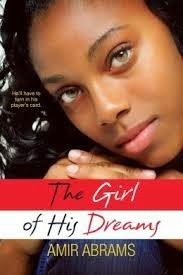


The Girl of His Dreams by Amir Abrams: The rules are simple: Play or get played. And never, ever, catch feelings. That's the motto 17-year-old heartthrob Antonio Lopez lives by. Since his mother walked out, Antonio's father has taught him everything he needs to know about women: they can't be trusted, and a real man has more than one. So once Antonio gets what he wants from a girl, he moves on. But McPherson High's hot new beauty is turning out to be Antonio's first real challenge. Miesha Wilson has a motto of her own: The thrill of the chase is not getting caught. Game knows game, and Miesha is so not interested. She's dumped her share of playboys and she's determined to stay clear of the likes of Antonio Lopez--until his crazy jealous ex aggravates her. But when she decides to play some games of her own, Miesha and Antonio find themselves wondering if love is real after all.
Rumor Central by Reshonda Tate Billingsley (series): After appearing on the reality show "Miami Divas," Maya Morgan is offered her own television show, but stepping up to the fame means spilling secrets about her friends, and someone will do anything to shut her up. (My teens LOVE this series).
When I Was the Greatest by Jason Reynolds: Ali lives in Bed-Stuy, a Brooklyn neighborhood known for guns and drugs, but he and his sister, Jazz, and their neighbors, Needles and Noodles, stay out of trouble until they go to the wrong party, where one gets badly hurt and another leaves with a target on his back.
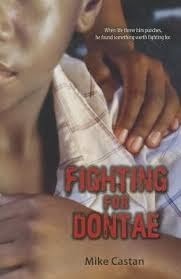
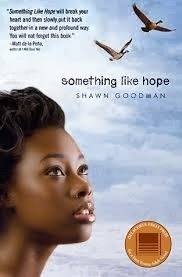
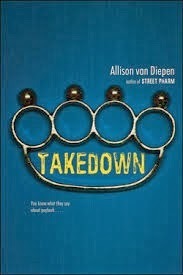
Fighting for Dontae by Mike Castan: When Mexican American seventh-grader Javier is assigned to work with a special education class and connects with Dontae, who has both physical and mental disabilities, his reputation among gang members and drug abusers no longer seems very important.
Something Like Hope by Shawn Goodman: Shavonne, a fierce, desperate seventeen year-old in juvenile lockup, wants to turn her life around before her eighteenth birthday, but corrupt guards, out-of-control girls, and shadows from her past make her task seem impossible.
Takedown by Allison van Diepen: After years in "juvie," Darren cooperates with the police to infiltrate a drug ring to settle a vendetta, but sweet, innocent Jessica is now in his life so when a deadly turf war erupts, Darren must protect not only his own life, but Jessica's as well.
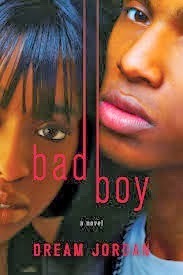
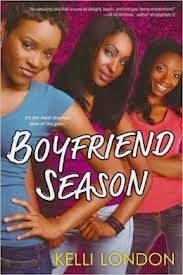
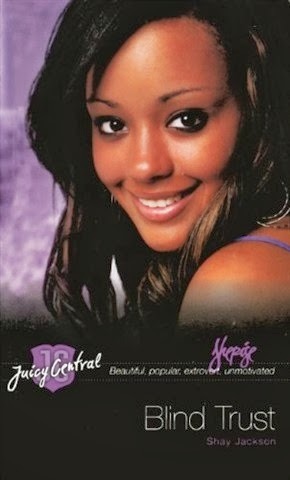
Bad Boy by Dream Jordan: Devastated to find herself back in a group home after a peaceful year of living with loving foster parents, a Brooklyn teenager striving to become strong and independent soon falls prey to the dangerous affections of a good looking but shady young man.
Boyfriend Season by Kelli London: Three girls in Atlanta fall in and out of love. Now each has an invitation to the hottest teen society party of the year. Can they handle the pressure of getting everything they think they want?
Blind Trust by Shay Jackson: Sherise thinks Carlos is fine. Everyone else, including her sister, Kiki, says he's a thug. But Carlos swears that he's out of the game.
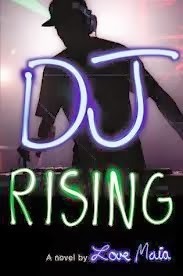
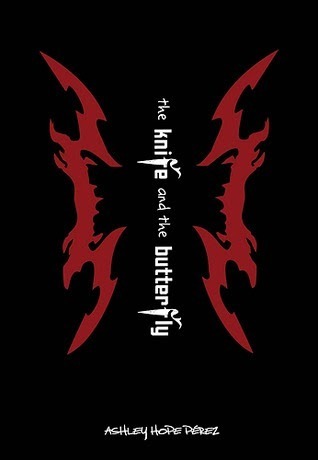
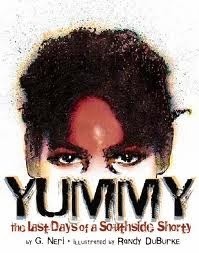
DJ Rising by Love Maia: Sixteen-year-old Marley Diego-Dylan's career as "DJ Ice" is skyrocketing, but his mother's heroin addiction keeps dragging him back to earth.
The Knife and the Butterfly by Ashley Hope Perez: After a brawl with a rival gang, sixteen-year-old Azael, a member of Houston's MS-13 gang and the son of illegal Salvadoran immigrants, wakes up in an unusual juvenile detention center where he is forced to observe another inmate through a one-way mirror.
Yummy: The Last Days of a Southside Shorty by G. Neri and Randy DuBurke: A graphic novel based on the true story of Robert "Yummy" Sandifer, an eleven-year old African American gang member from Chicago who shot a young girl and was then shot by his own gang members.
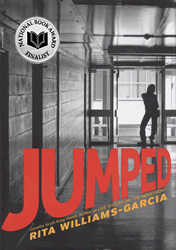
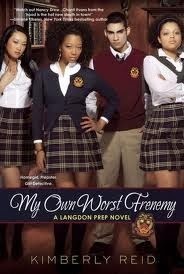
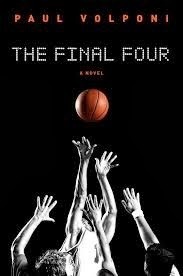
Jumped by Rita Williams-Garcia: The lives of Leticia, Dominique, and Trina are irrevocably intertwined through the course of one day in an urban high school after Leticia overhears Dominique's plans to beat up Trina and must decide whether or not to get involved.
My Own Worst Frenemy by Kimberly Reid (series): Chanti Evans moves from the streets of Detroit to the exclusive Langdon prepatory school, where her upbringing immediately makes her a suspect in the string of thefts occurring on campus, and she must find the culprit and clear her name. (Though it's set in a prep school, this has all of the hallmarks and appeal factors of urban fiction.)
The Final Four by Paul Volponi: Four players at the Final Four of the NCAA basketball tournament struggle with the pressures of tournament play and the expectations of society at large.
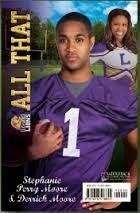
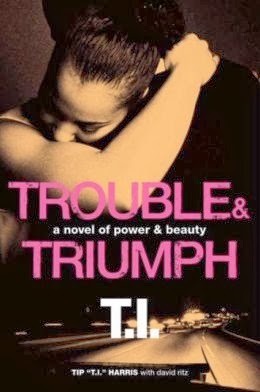
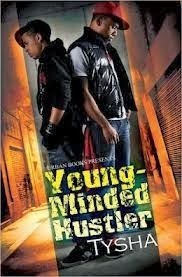
All That & Always Upbeat by Stephanie Perry-Moore and Derrick Moore: Two novels recount from different perspectives the challenges Charli Black and Blake Strong face in their relationship, personal lives, and at school.
Trouble & Triumph by T. I.: Leaving behind Power, the boy she's come to love, Tanya "Beauty" Long makes a name for herself in New York City's fashion industry, while Power becomes trapped in a world of drugs, women, and money where he makes a shocking discovery that brings Tanya back to him. (This one is adult, but it should have appeal for teen readers, with T. I.'s name recognition especially).
Young-Minded Hustler by Tysha: Shy's son, Prince, grows up trying to follow in his dead father's footsteps and be king of the streets, but when Shy's boys are attacked and the wrong brother is shot, she is determined to take revenge.
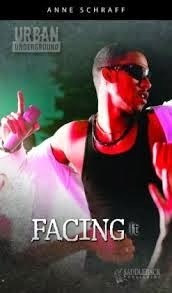
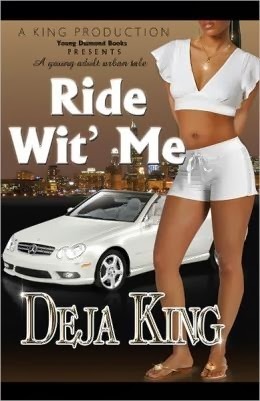
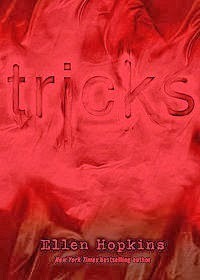
Facing It by Anne Schraff: While helping out two rocker friends by fronting for their band, high school senior Oliver Randall finds his new-found fame intoxicating.
Ride Wit' Me by Deja King: Sometimes in love, things are not meant to be. Parents can sometimes seem to be your enemy and the streets will always have their way of trying to destroy anything good. Will Mercedes and Dalvin fall victim to the obstacles standing in their way, or will they fight against the odds and ride it out.
Tricks by Ellen Hopkins: Five troubled teenagers fall into prostitution as they search for freedom, safety, community, family, and love.
Please add titles to this list. I tried to stay within a 2011 and forward publication date, so I would love to know even more titles falling within that span which make for good urban fiction.






 Related StoriesSeason of the Witch: A YA Reading ListWhen I Was The Greatest by Jason ReynoldsJanuary Debut YA Novels
Related StoriesSeason of the Witch: A YA Reading ListWhen I Was The Greatest by Jason ReynoldsJanuary Debut YA Novels
This month is no exception.
The topic for this genre guide is urban fiction, a topic that we're far less familiar with than I think we wish we were. It was always a topic on our list of potential choices, but when a reader asked me about it specifically, I knew it was time to roll up my sleeves and give it a shot. Kimberly and I are going to give this our best shot by defining, elaborating upon, and offering resources to YA urban fiction, along with a reading list, but this month in particular, we hope people who know more about this genre weigh in in the comments and offer us even more places to turn.
In many ways, urban fiction is a tough genre to define exactly because we all know what it is, but if we try to pin down an exact definition, we're bringing up a host of our own biases to that definition. Urban fiction spans formats, too: there are graphic novels easily classified as urban fiction as much as there are short stories falling into the urban fiction category. You may be familiar with urban fiction under other names, too, including street lit, hip hop fiction, or ghetto lit. All of those terms, save for street lit, make me a bit uncomfortable to use because I think they reduce the genre to something much more specific than it is, and I think it also makes assumptions about the books and their readers. I think hip hop fiction and ghetto lit might instead be part of -- rather than the defining feature of -- urban fiction.
Though I think it's clear, urban fiction is not the same thing as urban fantasy.
Much of the information I found defining urban fiction for teens comes from what Autumn Winters wrote in her Novelist genre guide, which you can download here. Urban fiction is a subset of realistic fiction set in today's urban communities. Often, it could be described as gritty, as many of the story lines in urban fiction revolve around teens being in tough situations that can accompany life in a rougher community. This isn't always the case, but one of the biggest appeal factors for readers of urban fiction is that it often pits teen characters into very adult situations. The stories are often filled with drama or melodrama, and characters can struggle with drugs, gangs, violence, drinking, sexual situations, and more. Winters notes in her guide that "glamor, crime, and shocking behavior are often present in large doses," and while that may be the case for many urban fiction novels, I think because urban fiction is itself a fairly expansive category with many overlapping elements with other genres, this might be more of an appeal factor, rather than a defining feature.
Urban fiction is typically fast paced, and sometimes -- though not always -- it has a real appeal to more reluctant readers because it dives immediately into stories and characters who are easy to understand and, in some cases, reflect the perceived (or objective) reality the reader himself/herself lives.
An important note about urban fiction: while it often can appeal to African American readers and often features African American characters, urban fiction is not African American fiction. Urban fiction is written by and stars characters of all shapes and colors, even though most of the work is written by and features black characters. What really defines this genre is its marrying of an urban setting with realistic situations. Never make assumptions about the books nor about their readers. Urban fiction may hold tremendous appeal to teen readers who have never seen the likes of a city as much as it may be too much for readers who live those reality to seek out. Every collection should include some urban fiction though, as it's not only a means of having a balanced collection but because it could open the eyes of readers to a whole new category of books they never thought they could love.
Winters notes in her guide that urban fiction can crossover with the broader category of African American lit, with literary fiction, as well as with urban Christian fiction. Last week, I blogged about Jason Reynolds's When I Was the Greatest , set in Bed Stuy, in Brooklyn, which meets all of the criteria of urban fiction and has a literary bent to it. Much can be said about Coe Booth's more literary "Bronxwood" series also fitting the definition of urban fiction, despite the fact the drama levels and pacing might not be quite the same as other books more commonly seen as urban fiction. So perhaps it's best to think of urban fiction as quite a large category of realistic YA novels set in an urban landscape, and within that, there are places for novels that have a Christian angle, for those which are more literary (however you choose to define that), for graphic novels, and so forth. Maybe in thinking that way, terms like "street lit" and "ghetto fiction" are less synonyms for urban fiction and more types of urban fiction. I'm not sure how different those two may be from one another, but my larger point is that urban fiction is an umbrella term, and it can encompass a broader range of titles beneath it.
Like most other genres, YA readers can be well-served with adult urban fiction, too. Though the situations and scenarios will be even rougher, grittier, and more blunt than those presented in the YA fiction (or in some cases, they may be tamer or more literary or more message-driven in content), readers who seek out this kind of work may appreciate being shown all of their options. Some authors cross over and write urban fiction for both teens and adults.
So what resources are out there for learning more about urban fiction, as well as discovering the authors and books which could be considered urban fiction? Surprisingly, there's very little. This is a category that, for a long time, was written and talked about widely, but in recent years, it seems to have become less of a popular genre to write or think about. That doesn't mean it has in any way lessened in popularity with readers. Some of the resources below will be a little dated, but the information is still worth taking in and thinking about.
Vanessa Irvin Morris might be the authority on street lit, as she literally wrote the book on this topic. She keeps a tremendous site over at Street Lit, which you should have on your radar. This isn't all focused on YA, but there are many resources and posts about YA at her site. Don't miss the street lit book awards, either. Want some reviews of urban fiction? Then check out Urban Reviews, which isn't singularly focused on YA, as it also includes plenty of adult titles. Urban Fiction Resources: The Prison Librarianship blog has a tremendous resource of links for more information and reading lists for urban fiction. It doesn't look like it has been updated in the last couple of months, but it has done a great job noting which resources they've included haven't updated. Mining these should offer way more than we can offer here. Jennifer Fountain wrote about the top ten urban fiction books at the Nerdy Book Club blog last year, and it's a great go-to for authors and series titles. Over at Writing Teen Novels, Paul Volponi talks about being honest in depicting reality in realistic fiction. What makes this worth reading is that Volponi writes urban fiction but may not be one of the first authors many readers would consider an urban fiction writer -- except he does just that. This is less of a resource proper but more of a necessary read to get a grip on why urban fiction matters and how urban fiction is an expansive genre, rather than a reductive one: Urban Fiction is Reality for Us.
Recent Urban Fiction
With more of a handle on the genre itself, let's talk about some of the books that have come out over the last few years that could be considered urban fiction. Some of these are more literary, some are more straight-on street lit. They all contain the hallmarks of urban fiction though: realistic stories set in urban areas that reflect some of the harsh, gritty, and sometimes (melo)dramatic aspects of that environment. All descriptions are from WorldCat, and additional titles that could be added to this list are more than welcome.
Before individual titles, it's worth pointing out there are publishers, such as Saddleback and Kimani Tru that devote entire series and lines to urban fiction. Some of their titles will be called out below, but those are two to have as resources for further title suggestions.
A few authors and series to know as go-to urban fiction include NiNi Simone, Nikki Carter, Earl Sewell, Darrien Lee, Babygirl Daniels, as well as the Bluford High series and Perfect Chemistry series. Walter Dean Myers, Sharon Draper, Jacqueline Woods, and Angela Johnson are other authors who are worth knowing, but readers who are seeking more traditional urban fiction heavier on fast pacing, on drugs/drinking/sex/violence and so forth, should not be given those authors as go-to urban fiction writers. The color of an author or main character's skin is not what defines urban fiction; it's the content of the book itself. It is a spectrum, and readers will tell you what it is they're really seeking in urban fiction. If they don't, ask.



The Girl of His Dreams by Amir Abrams: The rules are simple: Play or get played. And never, ever, catch feelings. That's the motto 17-year-old heartthrob Antonio Lopez lives by. Since his mother walked out, Antonio's father has taught him everything he needs to know about women: they can't be trusted, and a real man has more than one. So once Antonio gets what he wants from a girl, he moves on. But McPherson High's hot new beauty is turning out to be Antonio's first real challenge. Miesha Wilson has a motto of her own: The thrill of the chase is not getting caught. Game knows game, and Miesha is so not interested. She's dumped her share of playboys and she's determined to stay clear of the likes of Antonio Lopez--until his crazy jealous ex aggravates her. But when she decides to play some games of her own, Miesha and Antonio find themselves wondering if love is real after all.
Rumor Central by Reshonda Tate Billingsley (series): After appearing on the reality show "Miami Divas," Maya Morgan is offered her own television show, but stepping up to the fame means spilling secrets about her friends, and someone will do anything to shut her up. (My teens LOVE this series).
When I Was the Greatest by Jason Reynolds: Ali lives in Bed-Stuy, a Brooklyn neighborhood known for guns and drugs, but he and his sister, Jazz, and their neighbors, Needles and Noodles, stay out of trouble until they go to the wrong party, where one gets badly hurt and another leaves with a target on his back.



Fighting for Dontae by Mike Castan: When Mexican American seventh-grader Javier is assigned to work with a special education class and connects with Dontae, who has both physical and mental disabilities, his reputation among gang members and drug abusers no longer seems very important.
Something Like Hope by Shawn Goodman: Shavonne, a fierce, desperate seventeen year-old in juvenile lockup, wants to turn her life around before her eighteenth birthday, but corrupt guards, out-of-control girls, and shadows from her past make her task seem impossible.
Takedown by Allison van Diepen: After years in "juvie," Darren cooperates with the police to infiltrate a drug ring to settle a vendetta, but sweet, innocent Jessica is now in his life so when a deadly turf war erupts, Darren must protect not only his own life, but Jessica's as well.



Bad Boy by Dream Jordan: Devastated to find herself back in a group home after a peaceful year of living with loving foster parents, a Brooklyn teenager striving to become strong and independent soon falls prey to the dangerous affections of a good looking but shady young man.
Boyfriend Season by Kelli London: Three girls in Atlanta fall in and out of love. Now each has an invitation to the hottest teen society party of the year. Can they handle the pressure of getting everything they think they want?
Blind Trust by Shay Jackson: Sherise thinks Carlos is fine. Everyone else, including her sister, Kiki, says he's a thug. But Carlos swears that he's out of the game.



DJ Rising by Love Maia: Sixteen-year-old Marley Diego-Dylan's career as "DJ Ice" is skyrocketing, but his mother's heroin addiction keeps dragging him back to earth.
The Knife and the Butterfly by Ashley Hope Perez: After a brawl with a rival gang, sixteen-year-old Azael, a member of Houston's MS-13 gang and the son of illegal Salvadoran immigrants, wakes up in an unusual juvenile detention center where he is forced to observe another inmate through a one-way mirror.
Yummy: The Last Days of a Southside Shorty by G. Neri and Randy DuBurke: A graphic novel based on the true story of Robert "Yummy" Sandifer, an eleven-year old African American gang member from Chicago who shot a young girl and was then shot by his own gang members.



Jumped by Rita Williams-Garcia: The lives of Leticia, Dominique, and Trina are irrevocably intertwined through the course of one day in an urban high school after Leticia overhears Dominique's plans to beat up Trina and must decide whether or not to get involved.
My Own Worst Frenemy by Kimberly Reid (series): Chanti Evans moves from the streets of Detroit to the exclusive Langdon prepatory school, where her upbringing immediately makes her a suspect in the string of thefts occurring on campus, and she must find the culprit and clear her name. (Though it's set in a prep school, this has all of the hallmarks and appeal factors of urban fiction.)
The Final Four by Paul Volponi: Four players at the Final Four of the NCAA basketball tournament struggle with the pressures of tournament play and the expectations of society at large.



All That & Always Upbeat by Stephanie Perry-Moore and Derrick Moore: Two novels recount from different perspectives the challenges Charli Black and Blake Strong face in their relationship, personal lives, and at school.
Trouble & Triumph by T. I.: Leaving behind Power, the boy she's come to love, Tanya "Beauty" Long makes a name for herself in New York City's fashion industry, while Power becomes trapped in a world of drugs, women, and money where he makes a shocking discovery that brings Tanya back to him. (This one is adult, but it should have appeal for teen readers, with T. I.'s name recognition especially).
Young-Minded Hustler by Tysha: Shy's son, Prince, grows up trying to follow in his dead father's footsteps and be king of the streets, but when Shy's boys are attacked and the wrong brother is shot, she is determined to take revenge.



Facing It by Anne Schraff: While helping out two rocker friends by fronting for their band, high school senior Oliver Randall finds his new-found fame intoxicating.
Ride Wit' Me by Deja King: Sometimes in love, things are not meant to be. Parents can sometimes seem to be your enemy and the streets will always have their way of trying to destroy anything good. Will Mercedes and Dalvin fall victim to the obstacles standing in their way, or will they fight against the odds and ride it out.
Tricks by Ellen Hopkins: Five troubled teenagers fall into prostitution as they search for freedom, safety, community, family, and love.
Please add titles to this list. I tried to stay within a 2011 and forward publication date, so I would love to know even more titles falling within that span which make for good urban fiction.







 Related StoriesSeason of the Witch: A YA Reading ListWhen I Was The Greatest by Jason ReynoldsJanuary Debut YA Novels
Related StoriesSeason of the Witch: A YA Reading ListWhen I Was The Greatest by Jason ReynoldsJanuary Debut YA Novels
Published on February 02, 2014 22:00
January 30, 2014
Season of the Witch: A YA Reading List
Two years ago, mermaids were the new-and-hot trend in YA. The years before that, there were werewolves and vampires and other "creatures" making their way into paranormal YA. Without question, this year is the year of witches making a huge appearance in YA fiction. It looks like every major publisher has at least one witch novel on their lists, if not more than one, some of which are from fresh voices and others are continuations of series that include witches in them. Kimberly touched on this trend last year in her science fiction and fantasy preview, but I thought it would be worth delving into even deeper, as more books pop up featuring witches.
Witches are kind of a neat phenomenon in fiction for a couple of reasons. First, they aren't paranormal. Rather than being magical because of their physical shape, witches are -- for the most part -- magical despite taking what appears to be a human shape. Second, they fit nicely into the horror genre without necessarily being seen as a horror trope or a foundation of horror novels. Readers, especially teens, love witches because of how they're symbolic of the occult, which is perennially popular.
But witches don't have to be relegated to one kind of story, either, which is part of what makes them interesting to write about. As much as they're a part of horror, they're also a part of fantasy, science fiction, and maybe most commonly, they're recognizable in fairy tales. Witches are also historical, though in YA lit, there's a surprisingly few number of novels that tackle witches from that perspective.
In other words, witches are expansive, rather than limited to one sort of story.
Here's a roundup of recent and forthcoming YA titles featuring witches. All of the titles are out this year, except in the cases where the book is a continuation of a series (I've noted those). I should note that some of these titles, the witch element isn't necessarily what the book is entirely about. In some cases, the witch aspect plays a more subtle role.
All descriptions are from WorldCat unless otherwise noted.
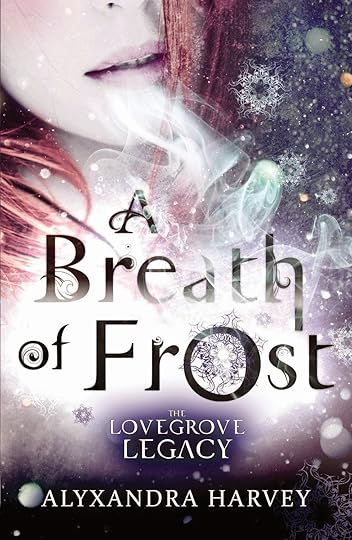

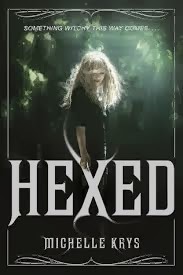
A Breath of Frost by Alyxandra Harvey: When three cousins in 1814 London discover their magical powers and family lineage of witchcraft, they accidentally open the gates to the underworld allowing the spirits of dark witches known as the Greymalkin Sisters to hunt and kill young debutante witches for their powers. Available now.
Half Bad by Sally Green: In modern-day England, where witches live alongside humans, Nathan, son of a White witch and the most powerful Black witch, must escape captivity before his seventeenth birthday and receive the gifts that will determine his future. Available March 4.
Hexed by Michelle Krys: Popular cheerleader Indigo Blackwood, sixteen, finds her perfect life threatened when Bishop, a tattooed, leather-clad stranger, tells her the family Bible just stolen from the attic of her mother's occult shop could mean the end to all witches, including, he says, Indigo herself. Available June 10.
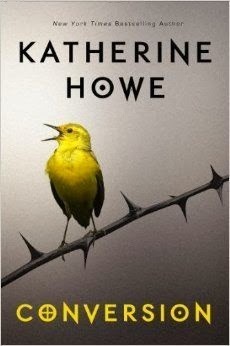


Conversion by Katherine Howe: It’s senior year at St. Joan’s Academy, and school is a pressure cooker. College applications, the battle for valedictorian, deciphering boys’ texts: through it all, Colleen Rowley and her friends are expected to keep it together. Until they can’t. First Clara Rutherford starts having loud, uncontrollable tics in the middle of class. More students and stranger symptoms follow: seizures, body vibration, violent coughing fits. The media descends on Danvers, MA, as school officials, angry parents and the board of health scramble to find something, or someone, to blame. Pollution? Stress? Or are the girls faking? But Colleen—who’s been reading The Crucible for extra credit—comes to realize what nobody else has: Danvers was once Salem Village, where another group of girls suffered from a similarly bizarre epidemic three centuries ago. Available July 1 (description via Edelweiss).
House of Ivy & Sorrow by Natalie Whipple: Seventeen-year-old Josephine Hemlock has spent her life hiding the fact that she's a witch--but when the mysterious Curse that killed her mother returns, she might not be able to keep her magical and normal lives separate. Available April 15.
The Wizard's Promise by Cassandra Rose Clarke: Hanna has spent her life hearing about the adventures of her namesake Ananna, the lady pirate, and assassin Naji. She dreams of the same adventures, but little does she know she is about to tumble into one of her own. Hanna is apprenticed to a taciturn fisherman called Kolur, and, during a day of storms and darkness, are swept wildly off course. In this strange new land, Kolur hires a stranger to join the crew and, rather than heading home, sets a course for the dangerous island of Jadanvar. As Hanna meets a secretive merboy, and learns that Kolur has a deadly past, she soon realizes that wishing for adventures is a dangerous game - because those wishes might come true. Available May 6.
Salt & Storm by Kendal Kulper: Sixteen-year-old Avery Roe wants to take her rightful place as the sea witch of Prince Island. When she foresees her own murder, a harpoon boy named Tane promises to help her change her fate and keep her island safe and prosperous, but salvation will require an unexpected sacrifice. Available September. No official cover has been released yet.

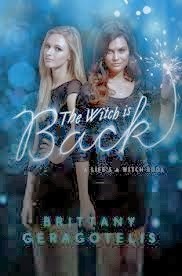

Stolen Songbird by Danielle Jensen: For five centuries, a witch's curse has bound the trolls to their city beneath the ruins of Forsaken Mountain. Time enough for their dark and nefarious magic to fade from human memory and into myth. But a prophesy has been spoken of a union with the power to set the trolls free, and when Cécile de Troyes is kidnapped and taken beneath the mountain, she learns there is far more to the myth of the trolls than she could have imagined. Cécile has only one thing on her mind after she is brought to Trollus: escape. Only the trolls are clever, fast, and inhumanly strong. She will have to bide her time, wait for the perfect opportunity. But something unexpected happens while she's waiting - she begins to fall for the enigmatic troll prince to whom she has been bonded and married. She begins to make friends. And she begins to see that she may be the only hope for the half-bloods - part troll, part human creatures who are slaves to the full-blooded trolls. There is a rebellion brewing. And her prince, Tristan, the future king, is its secret leader. As Cécile becomes involved in the intricate political games of Trollus, she becomes more than a farmer's daughter. She becomes a princess, the hope of a people, and a witch with magic powerful enough to change Trollus forever. Available April 1. Description via Edelweiss.
The Witch is Back by Brittany Geragotelis: After leading her coven into battle against the Parrishables, teenaged witch Hadley Bishop is looking forward to a relaxing, love-filled summer with boyfriend Asher, until his ex-girlfriend, Brooklyn, shows up and a power struggle ensues. Available now. This is the third book in a series, which begins with What the Spell, followed by Life's A Witch.
Red Queen by Christopher Pike: Heading off for a weekend in Las Vegas with her friends, Jessie Ralle has only one worry—how to make it through the road trip in the same car with her Ex, Jimmy Kelter. The guy who broke her heart five months ago when he dumped her for no reason. The guy who’s finally ready to tell her why he did it, because he wants her back. But what Jessie doesn’t realize is that Jimmy is the least of her problems. In Las Vegas she meets Russ, a mesmerizing stranger who shows her how to gamble, and who never seems to lose. Curious, Jessie wants to know his secret, and in response, alone in his hotel room, he teaches her a game that opens a door to another reality. To Witch World. Suddenly Jessie discovers that she’s stumbled into a world where some people can do the impossible, and others may not even be human. Are there really witches? Is she one of them? Available August 19. This book was originally published as Witch World, but it's getting a new cover and title treatment.
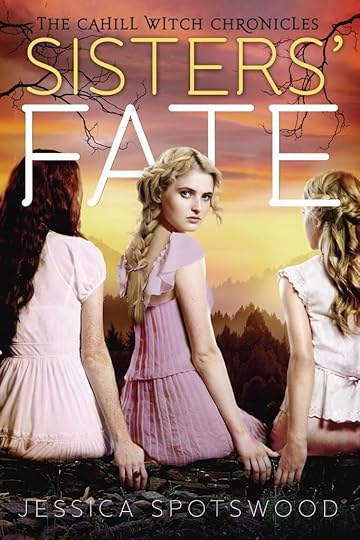
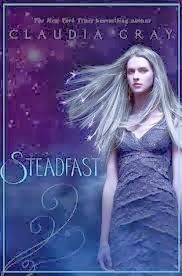
Sisters' Fate by Jessica Spotswood: A fever ravages New London, but with the Brotherhood sending suspected witches straight to the gallows, the Sisters are powerless against the disease. They can’t help without revealing their powers—as Cate learns when a potent display of magic turns her into the most wanted witch in all of New England. To make matters worse, Cate has been erased from the memory of her beloved Finn. While she’s torn between protecting him from further attacks and encouraging him to fall for her all over again, she’s certain she can never forgive Maura’s betrayal. And now that Tess’s visions have taken a deadly turn, the prophecy that one Cahill sister will murder another looms ever closer to its fulfillment. This is the third book in a series that begins with Born Wicked and continues with Star Cursed. Sisters' Fate will be available August 14. Description via Goodreads.
Steadfast by Claudia Gray: Nadia must stop the evil sorceress Elizabeth before she lures the One Beneath to Captive's Sound, destroying the town and everyone Nadia holds dear at the same time. Steadfast is the sequel to Spellcaster and will be available March 4.
Seduction by Molly Cochran: There's not yet an official description nor cover for this book yet, but it's the third in a series that begins with Legacy and Poison . Seduction will be available December 4.
As much fun as it is to preview a trend, I think it's also worthwhile to point to some backlist titles that feature witches in some capacity. Here's a look at some older YA featuring witches to satisfy eager readers. This is far from comprehensive (I didn't include James Patterson's "Witch and Wizard" series, for example), so feel free to share other titles in the comments -- both those which are older and those which may be coming out soon.
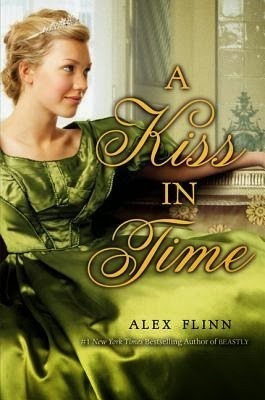
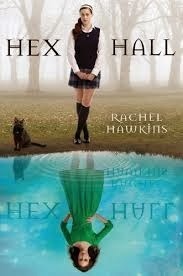
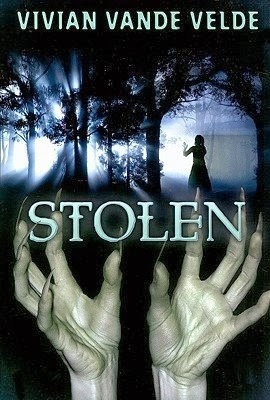
A Kiss in Time by Alex Flinn: Sixteen-year-old Princess Talia persuades seventeen-year-old Jack, the modern-day American who kissed her awake after a 300-year sleep, to take her to his Miami home, where she hopes to win his love before the witch who cursed her can spirit her away.
Hex Hall by Rachel Hawkins (series): When Sophie attracts too much human attention for a prom-night spell gone horribly wrong, she is exiled to Hex Hall, an isolated reform school for wayward Prodigium, a.k.a. witches, faeries, and shapeshifters.
Stolen by Vivian Vande Velde: A girl finds herself running through the forest at the edge of a village with no memory of anything, even her own name, and later learns that she might be twelve-year-old Isabelle, believed to be stolen by a witch six years before.
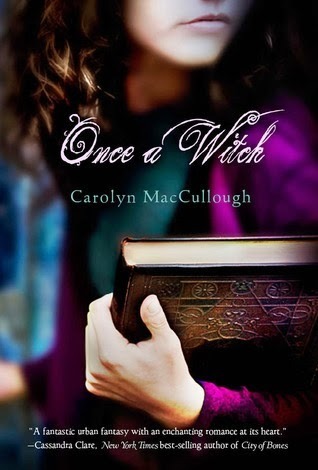
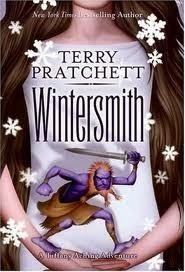
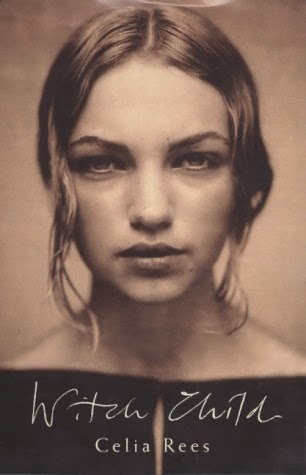
Once A Witch by Carolyn MacCullough (series): Born into a family of witches, seventeen-year-old Tamsin is raised believing that she alone lacks a magical "Talent," but when her beautiful and powerful sister is taken by an age-old rival of the family in an attempt to change the balance of power, Tamsin discovers her true destiny.
"Tiffany Aching" series by Terry Pratchett
Witch Child by Celia Rees: In 1659, fourteen-year-old Mary Newbury keeps a journal of her voyage from England to the New World and her experiences living as a witch in a community of Puritans near Salem, Massachusetts.
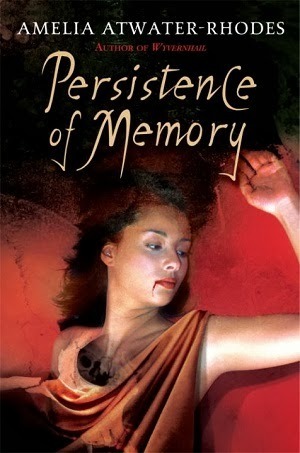

Persistence of Memory by Amelia Atwater-Rhodes: Diagnosed with schizophrenia as a child, sixteen-year-old Erin has spent half of her life in therapy and on drugs, but now must face the possibility of weird things in the real world, including shapeshifting friends and her "alter," a centuries-old vampire.
The Brides of Rollrock Island by Margo Lanagan: On remote Rollrock Island, men go to sea to make their livings--and to catch their wives. The witch Misskaella knows the way of drawing a girl from the heart of a seal, of luring the beauty out of the beast. And for a price a man may buy himself a lovely sea-wife. He may have and hold and keep her. And he will tell himself that he is her master. But from his first look into those wide, questioning, liquid eyes, he will be just as transformed as she. He will be equally ensnared. And the witch will have her true payment.
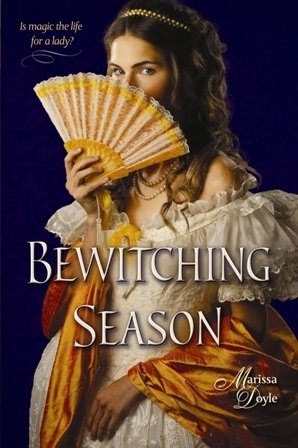
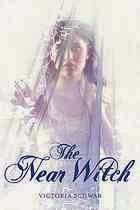
Bewitching Season by Marissa Doyle (series): In 1837, as seventeen-year-old twins, Persephone and Penelope, are starting their first London Season they find that their beloved governess, who has taught them everything they know about magic, has disappeared.
The Near Witch by Victoria Schwab: Sixteen-year-old Lexi, who lives on an enchanted moor at the edge of the village of Near, must solve the mystery when, the day after a mysterious boy appears in town, children start disappearing.






 Related StoriesWhen I Was The Greatest by Jason ReynoldsJanuary Debut YA NovelsYouth Media Awards
Related StoriesWhen I Was The Greatest by Jason ReynoldsJanuary Debut YA NovelsYouth Media Awards
Witches are kind of a neat phenomenon in fiction for a couple of reasons. First, they aren't paranormal. Rather than being magical because of their physical shape, witches are -- for the most part -- magical despite taking what appears to be a human shape. Second, they fit nicely into the horror genre without necessarily being seen as a horror trope or a foundation of horror novels. Readers, especially teens, love witches because of how they're symbolic of the occult, which is perennially popular.
But witches don't have to be relegated to one kind of story, either, which is part of what makes them interesting to write about. As much as they're a part of horror, they're also a part of fantasy, science fiction, and maybe most commonly, they're recognizable in fairy tales. Witches are also historical, though in YA lit, there's a surprisingly few number of novels that tackle witches from that perspective.
In other words, witches are expansive, rather than limited to one sort of story.
Here's a roundup of recent and forthcoming YA titles featuring witches. All of the titles are out this year, except in the cases where the book is a continuation of a series (I've noted those). I should note that some of these titles, the witch element isn't necessarily what the book is entirely about. In some cases, the witch aspect plays a more subtle role.
All descriptions are from WorldCat unless otherwise noted.



A Breath of Frost by Alyxandra Harvey: When three cousins in 1814 London discover their magical powers and family lineage of witchcraft, they accidentally open the gates to the underworld allowing the spirits of dark witches known as the Greymalkin Sisters to hunt and kill young debutante witches for their powers. Available now.
Half Bad by Sally Green: In modern-day England, where witches live alongside humans, Nathan, son of a White witch and the most powerful Black witch, must escape captivity before his seventeenth birthday and receive the gifts that will determine his future. Available March 4.
Hexed by Michelle Krys: Popular cheerleader Indigo Blackwood, sixteen, finds her perfect life threatened when Bishop, a tattooed, leather-clad stranger, tells her the family Bible just stolen from the attic of her mother's occult shop could mean the end to all witches, including, he says, Indigo herself. Available June 10.



Conversion by Katherine Howe: It’s senior year at St. Joan’s Academy, and school is a pressure cooker. College applications, the battle for valedictorian, deciphering boys’ texts: through it all, Colleen Rowley and her friends are expected to keep it together. Until they can’t. First Clara Rutherford starts having loud, uncontrollable tics in the middle of class. More students and stranger symptoms follow: seizures, body vibration, violent coughing fits. The media descends on Danvers, MA, as school officials, angry parents and the board of health scramble to find something, or someone, to blame. Pollution? Stress? Or are the girls faking? But Colleen—who’s been reading The Crucible for extra credit—comes to realize what nobody else has: Danvers was once Salem Village, where another group of girls suffered from a similarly bizarre epidemic three centuries ago. Available July 1 (description via Edelweiss).
House of Ivy & Sorrow by Natalie Whipple: Seventeen-year-old Josephine Hemlock has spent her life hiding the fact that she's a witch--but when the mysterious Curse that killed her mother returns, she might not be able to keep her magical and normal lives separate. Available April 15.
The Wizard's Promise by Cassandra Rose Clarke: Hanna has spent her life hearing about the adventures of her namesake Ananna, the lady pirate, and assassin Naji. She dreams of the same adventures, but little does she know she is about to tumble into one of her own. Hanna is apprenticed to a taciturn fisherman called Kolur, and, during a day of storms and darkness, are swept wildly off course. In this strange new land, Kolur hires a stranger to join the crew and, rather than heading home, sets a course for the dangerous island of Jadanvar. As Hanna meets a secretive merboy, and learns that Kolur has a deadly past, she soon realizes that wishing for adventures is a dangerous game - because those wishes might come true. Available May 6.
Salt & Storm by Kendal Kulper: Sixteen-year-old Avery Roe wants to take her rightful place as the sea witch of Prince Island. When she foresees her own murder, a harpoon boy named Tane promises to help her change her fate and keep her island safe and prosperous, but salvation will require an unexpected sacrifice. Available September. No official cover has been released yet.



Stolen Songbird by Danielle Jensen: For five centuries, a witch's curse has bound the trolls to their city beneath the ruins of Forsaken Mountain. Time enough for their dark and nefarious magic to fade from human memory and into myth. But a prophesy has been spoken of a union with the power to set the trolls free, and when Cécile de Troyes is kidnapped and taken beneath the mountain, she learns there is far more to the myth of the trolls than she could have imagined. Cécile has only one thing on her mind after she is brought to Trollus: escape. Only the trolls are clever, fast, and inhumanly strong. She will have to bide her time, wait for the perfect opportunity. But something unexpected happens while she's waiting - she begins to fall for the enigmatic troll prince to whom she has been bonded and married. She begins to make friends. And she begins to see that she may be the only hope for the half-bloods - part troll, part human creatures who are slaves to the full-blooded trolls. There is a rebellion brewing. And her prince, Tristan, the future king, is its secret leader. As Cécile becomes involved in the intricate political games of Trollus, she becomes more than a farmer's daughter. She becomes a princess, the hope of a people, and a witch with magic powerful enough to change Trollus forever. Available April 1. Description via Edelweiss.
The Witch is Back by Brittany Geragotelis: After leading her coven into battle against the Parrishables, teenaged witch Hadley Bishop is looking forward to a relaxing, love-filled summer with boyfriend Asher, until his ex-girlfriend, Brooklyn, shows up and a power struggle ensues. Available now. This is the third book in a series, which begins with What the Spell, followed by Life's A Witch.
Red Queen by Christopher Pike: Heading off for a weekend in Las Vegas with her friends, Jessie Ralle has only one worry—how to make it through the road trip in the same car with her Ex, Jimmy Kelter. The guy who broke her heart five months ago when he dumped her for no reason. The guy who’s finally ready to tell her why he did it, because he wants her back. But what Jessie doesn’t realize is that Jimmy is the least of her problems. In Las Vegas she meets Russ, a mesmerizing stranger who shows her how to gamble, and who never seems to lose. Curious, Jessie wants to know his secret, and in response, alone in his hotel room, he teaches her a game that opens a door to another reality. To Witch World. Suddenly Jessie discovers that she’s stumbled into a world where some people can do the impossible, and others may not even be human. Are there really witches? Is she one of them? Available August 19. This book was originally published as Witch World, but it's getting a new cover and title treatment.


Sisters' Fate by Jessica Spotswood: A fever ravages New London, but with the Brotherhood sending suspected witches straight to the gallows, the Sisters are powerless against the disease. They can’t help without revealing their powers—as Cate learns when a potent display of magic turns her into the most wanted witch in all of New England. To make matters worse, Cate has been erased from the memory of her beloved Finn. While she’s torn between protecting him from further attacks and encouraging him to fall for her all over again, she’s certain she can never forgive Maura’s betrayal. And now that Tess’s visions have taken a deadly turn, the prophecy that one Cahill sister will murder another looms ever closer to its fulfillment. This is the third book in a series that begins with Born Wicked and continues with Star Cursed. Sisters' Fate will be available August 14. Description via Goodreads.
Steadfast by Claudia Gray: Nadia must stop the evil sorceress Elizabeth before she lures the One Beneath to Captive's Sound, destroying the town and everyone Nadia holds dear at the same time. Steadfast is the sequel to Spellcaster and will be available March 4.
Seduction by Molly Cochran: There's not yet an official description nor cover for this book yet, but it's the third in a series that begins with Legacy and Poison . Seduction will be available December 4.
As much fun as it is to preview a trend, I think it's also worthwhile to point to some backlist titles that feature witches in some capacity. Here's a look at some older YA featuring witches to satisfy eager readers. This is far from comprehensive (I didn't include James Patterson's "Witch and Wizard" series, for example), so feel free to share other titles in the comments -- both those which are older and those which may be coming out soon.



A Kiss in Time by Alex Flinn: Sixteen-year-old Princess Talia persuades seventeen-year-old Jack, the modern-day American who kissed her awake after a 300-year sleep, to take her to his Miami home, where she hopes to win his love before the witch who cursed her can spirit her away.
Hex Hall by Rachel Hawkins (series): When Sophie attracts too much human attention for a prom-night spell gone horribly wrong, she is exiled to Hex Hall, an isolated reform school for wayward Prodigium, a.k.a. witches, faeries, and shapeshifters.
Stolen by Vivian Vande Velde: A girl finds herself running through the forest at the edge of a village with no memory of anything, even her own name, and later learns that she might be twelve-year-old Isabelle, believed to be stolen by a witch six years before.



Once A Witch by Carolyn MacCullough (series): Born into a family of witches, seventeen-year-old Tamsin is raised believing that she alone lacks a magical "Talent," but when her beautiful and powerful sister is taken by an age-old rival of the family in an attempt to change the balance of power, Tamsin discovers her true destiny.
"Tiffany Aching" series by Terry Pratchett
Witch Child by Celia Rees: In 1659, fourteen-year-old Mary Newbury keeps a journal of her voyage from England to the New World and her experiences living as a witch in a community of Puritans near Salem, Massachusetts.


Persistence of Memory by Amelia Atwater-Rhodes: Diagnosed with schizophrenia as a child, sixteen-year-old Erin has spent half of her life in therapy and on drugs, but now must face the possibility of weird things in the real world, including shapeshifting friends and her "alter," a centuries-old vampire.
The Brides of Rollrock Island by Margo Lanagan: On remote Rollrock Island, men go to sea to make their livings--and to catch their wives. The witch Misskaella knows the way of drawing a girl from the heart of a seal, of luring the beauty out of the beast. And for a price a man may buy himself a lovely sea-wife. He may have and hold and keep her. And he will tell himself that he is her master. But from his first look into those wide, questioning, liquid eyes, he will be just as transformed as she. He will be equally ensnared. And the witch will have her true payment.


Bewitching Season by Marissa Doyle (series): In 1837, as seventeen-year-old twins, Persephone and Penelope, are starting their first London Season they find that their beloved governess, who has taught them everything they know about magic, has disappeared.
The Near Witch by Victoria Schwab: Sixteen-year-old Lexi, who lives on an enchanted moor at the edge of the village of Near, must solve the mystery when, the day after a mysterious boy appears in town, children start disappearing.







 Related StoriesWhen I Was The Greatest by Jason ReynoldsJanuary Debut YA NovelsYouth Media Awards
Related StoriesWhen I Was The Greatest by Jason ReynoldsJanuary Debut YA NovelsYouth Media Awards
Published on January 30, 2014 22:00
January 29, 2014
When I Was The Greatest by Jason Reynolds
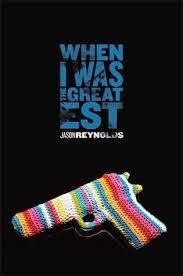 If you're looking for urban fiction, you might want to give Jason Reynolds's When I Was The Greatest a shot. Set in Bed Stuy, New York, this is the story of Ari, a good guy who is just trying to pull it all together and keep afloat in a neighborhood which isn't always the easiest, the fairest, or the safest place to be.
If you're looking for urban fiction, you might want to give Jason Reynolds's When I Was The Greatest a shot. Set in Bed Stuy, New York, this is the story of Ari, a good guy who is just trying to pull it all together and keep afloat in a neighborhood which isn't always the easiest, the fairest, or the safest place to be.But this isn't really a story about feeling sorry for Ari. Ari is a pretty sweet guy -- he absolutely adores his mother and his little sister Jazz. His dad, who is not living with them, has made a lot of mistakes in his life, but Ari understands the whys and hows of those mistakes and accepts his father despite them. Dad comes around quite a bit, so he's not an entirely absent father.
Then there are Noodles and Needles. Not their real names, of course. They're Ari's neighbors, brothers, who are about as divergent in personality from one another, and from Ari, as possible. Noodles is older, and he's probably Ari's best friend. But he's a troublemaker. Noodles engages in activities he shouldn't and he does so without a whole lot of remorse. He'll steal and he'll act out and it's not a big deal to him.
Needles gets his nickname from the needles he uses to knit. He learns how to knit from Ari's mother, who decided to show Needles how to do it because her background in working with mentally ill taught her that sometimes having a means of refocusing attention can help a person with an illness.
Needles has tourette syndrome, and he regularly breaks out into tics. The knitting, as they all discover, is a means of helping calm Needles down during a tic. He loves the activity, as it keeps both his mind and his hands busy. Ari thinks it's kind of neat that Needles is so taken with it, but Noodles is far less into it -- it makes his brother look even weaker than he already is.
Reynolds's novel is a character-driven one, as the bulk of the action in this story is far less important than the development of the boys. We learn pretty early on that Noodles acts out, and Ari suspects there's a lot more going on within him as to why he chooses to behave the way he does. As we get to know the characters better after the big incident -- which I'll get to in a minute -- we discover than Noodles's behavior is related to the resentment he has toward Needles's illness. Noodles believes that his brother's tics are the reason that their father left them, and even though he loves Needles, he can't help but associate his father's absence with him. Of course, there is a lot more to it than that, but knowing Noodles's world view, his beliefs and suspicions ring true and honest. He's a teen in a rough part of town with no father and a brother who he loves and wants to love more, but he can't make sense of the way all of the cards have fallen in his life.
What Ari wants to do is get all three of them into one of the biggest area parties for just one night. That party, which will be brimming with pretty girls, booze, and good beats, should help loosen them all up. And of course, it'll make them look cool, since they're all under 18. The bulk of the plot of When I Was The Greatest revolves around Ari, Noodles, and Needles getting new hair cuts and styles and flashier clothes in order to fit in to this party. But when they get to the party and Ari's put into a corner he doesn't know how to escape from, he fears that his reputation will forever be tainted. Except that's not really the thing he has to be worried about.
Needles is in trouble. And Noodles will be in trouble, too.
How the three boys untangle themselves from the party and the fight that broke out is what changes their relationships with one another and for Ari, it changes his relationship with his father.
The setting in this story is rich, but what I think I appreciated about it the most was that while this was urban and while it indeed featured the elements you'd come to "expect" in an urban novel -- violence, drinking and drugs, gangs, and so forth -- that's not at all what the book was about. This was a book featuring black teens who are just that: teens. They're navigating relationships with one another and they're figuring out their own selves in the world they're a part of. Things aren't perfect, but the story is never focused on that imperfection. It's on the sidelines. The focus is instead on the characters. Reynolds does an excellent job of making Ari's voice authentic and relatable. There are good adults in this book, too, and what makes some of them such good adults is that they've all made mistakes and not only do they own up to them, but they talk about how much they've learned from their past choices. Beyond Ari's mother -- who works two jobs to make ends meet -- and Ari's father -- who does sketchy stuff in order to make a living -- there is Ari's boxing coach who becomes an incredible mentor for Ari not just in terms of the sport, but on a much grander scale.
When I Was The Greatest is a bit of a slower read, though, because it is more focused on character than it is on plot. Perhaps a means of describing this book would be to call it literary urban fiction. This book should have good appeal to teen readers, and in conjunction, there's a lot that can be talked about. There is great service done even in the packaging of this book. The knitted gun on the cover is appealing and raises questions of what role it could have in the story (there's not a knitted gun, but there is knitting and there is a gun incident that stands as the moment when Ari and his father really connect).
Readers who love Coe Booth's work will find Reynolds's novel to be a really good read alike. As long as language isn't an issue -- because one of the characters suffers from tics -- this book would be okay to hand to younger teen readers eager for edgier realistic fiction.
When I Was The Greatest is available now. Review copy picked up from my library.







 Related StoriesAnd We Stay by Jenny HubbardThe Killing Woods by Lucy Christopher (& a giveaway!)One Old, One New, and One Coming Soon: Three Recent Contemporary Realistic YA Reads
Related StoriesAnd We Stay by Jenny HubbardThe Killing Woods by Lucy Christopher (& a giveaway!)One Old, One New, and One Coming Soon: Three Recent Contemporary Realistic YA Reads
Published on January 29, 2014 22:00
January 28, 2014
January Debut YA Novels

A new year means it's time for a whole new round of debut authors and voices to read. Like last year, I'll do a monthly roundup of debut novels for the month, with cover images and book description, and I'll link up any reviews Kimberly or I write as the year progresses for easy reference.
"Debut" is a topic I plan on talking about a bit more in depth soon, but in short, these roundups are for first-time authors of any sorts who are publishing their very first YA book. So you won't see books that are first YA books from authors who have previously published adult or children's books. You also won't see books that are debut novels in a new genre or by authors assuming a pseudonym for a particular book. I'm keeping the definition of debut straight and pure.
With that, here are January's debut YA novels. January tends to be a quieter month in terms of publishing, so it's not surprising there are only a few debut novels. All descriptions are from WorldCat, unless otherwise noted. If I have missed a traditionally published debut novel out this month, let me know in the comments. I want books that are available for print purchase through major sources -- please no self-published or digital-only titles.
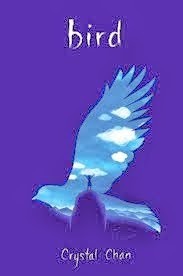
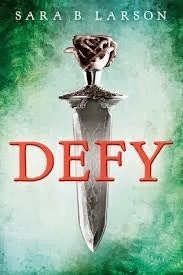
Bird by Crystal Chan: Twelve-year-old Jewel was born on the day her brother Bird died and lives in a house of silence and secrets, but a new boy in her Iowa town may help find the answers Jewel wants despite her Jamaican grandfather's warning that he is a "duppy," a malevolent spirit.
Defy by Sara B. Larson: Seventeen-year-old Alexa's parents were killed by a sorcerer during a raid, so she has disguised herself as a boy, joined Antion's army, and earned a place on Prince Damian's guard--but Antion is ruled by an evil king, and "Alex" must find a way to defeat him and protect her prince.
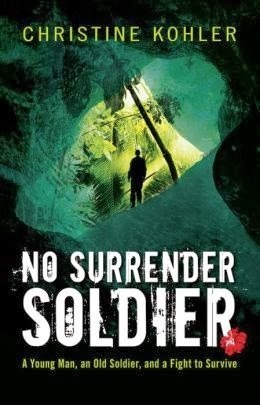
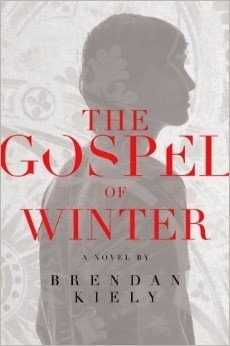

No Surrender Soldier by Christine Kohler: Growing up on Guam in 1972, fifteen-year-old Kiko is beset by worries: He's never kissed a girl, the popular guys get all the attention at school--but the worst part is the serious problems at home. His older brother is missing in Vietnam, his grandfather is losing it to dementia, and he just learned that his mother was raped by a Japanese soldier during World War II. It all comes together when he discovers an old man, a Japanese soldier, hiding in the jungle behind his house. It's not the same man who raped his mother, but, in his rage, Kiko cares only about protecting his family and avenging his mom--no matter what it takes. And so, a shy, peaceable boy begins to plan a murder. But how far will Kiko go to prove to himself that he's a man? Based on a true incident in history, No Surrender Soldier is the story of a boy grappling with ancient questions of courage and manhood before he can move on.
The Gospel of Winter by Brendan Kiely: Managing the challenges of his fractured family by taking Adderall, sneaking drinks, and confiding in an abusive priest, Aidan finds support from new friends including a crush, a wild girl, and a swim-team captain with his own secrets.
The Scar Boys by Len Vlahos: Written as a college admission essay, eighteen-year-old Harry Jones recounts a childhood defined by the hideous scars he hid behind, and how forming a band brought self-confidence, friendship, and his first kiss.







 Related StoriesYouth Media AwardsAnd We Stay by Jenny HubbardThe "Meet" Market: YA X-Meets-Y Pitches of Note, Part Two
Related StoriesYouth Media AwardsAnd We Stay by Jenny HubbardThe "Meet" Market: YA X-Meets-Y Pitches of Note, Part Two
Published on January 28, 2014 22:00
January 27, 2014
2014 Youth Media Awards - Thoughts & Reactions
The announcements happened, and all of our to-read shelves exploded. Now comes the equally fun part: dissecting the choices and discussing amongst ourselves what they all mean. I'm going to touch on just a few titles honored and blurt out a few thoughts about each - please discuss at will in the comments.
Printz Award
I haven't read a single one of these books. Nary a one. But I'm psyched that of the five books honored, three are SFF books: Kingdom of Little Wounds by Susann Cokal, Maggot Moon by Sally Gardner, and Midwinterblood by Marcus Sedgwick. Interestingly this year, I don't think any of the titles (including the two non-SFF titles, Navigating Early by Clare Vanderpool and Eleanor & Park by Rainbow Rowell) were huge surprises. I'd seen all of the selections discussed as Printz possibilities in a few different places by many different people. The exception is perhaps Navigating Early, which I think was a bit of a shock for several viewers who weren't expecting a book on the younger side of YALSA's spectrum to be honored.
Odyssey
I love this award so, so much, given to Scowler this year. This is the second year that the team of Daniel Kraus and Kirby Heyborne have won the gold seal, which is remarkable to me. (They previously won for Rotters in 2012). There is clearly something magical going on there. The ten-second clip the committee chose to showcase the audiobook gave the whole audience a collective shudder - and they loved every moment of it.
Edwards
I don't think I was expecting Markus Zusak to take the prize, perhaps because he's only written five books, and Edwards winners tend to have a larger oeuvre. But there's no denying his books have made a significant and lasting contribution to youth literature. I have a copy of Getting the Girl that I've been meaning to read for years - perhaps now is the right time.
Overall Thoughts
This was a good year for girls named Flora, for balls and marbles and other round things, for Candlewick, for Brian Floca and Tim Federle. It was also a good year for genre fiction, which had representation in nearly every award category. The Morris honored a ghost story (In the Shadow of Blackbirds by Cat Winters), the middle grade Schneider was awarded to a fantasy about dragons (Handbook for Dragon Slayers by Merrie Haskell), the Belpre honored an apocalyptic story (The Living by Matt de la Pena), the Odyssey awarded a truly creepy horror audiobook (Scowler by Daniel Kraus, read by Kirby Heyborne), a Newbery honor went to a ghost/horror story (Doll Bones by Holly Black), and as I mentioned above, over half of the Printz titles were SFF.
I loved what Angie Manfredi (@misskubelik) had to say about a couple of these choices on Twitter yesterday morning. She said it in a few 140-character tweets better than I could. About Matt de la Pena's The Living and Merrie Haskell's Handbook for Dragon Slayers:







 Related StoriesYouth Media AwardsOur Printz Predictions for 2013
Related StoriesYouth Media AwardsOur Printz Predictions for 2013
Printz Award
I haven't read a single one of these books. Nary a one. But I'm psyched that of the five books honored, three are SFF books: Kingdom of Little Wounds by Susann Cokal, Maggot Moon by Sally Gardner, and Midwinterblood by Marcus Sedgwick. Interestingly this year, I don't think any of the titles (including the two non-SFF titles, Navigating Early by Clare Vanderpool and Eleanor & Park by Rainbow Rowell) were huge surprises. I'd seen all of the selections discussed as Printz possibilities in a few different places by many different people. The exception is perhaps Navigating Early, which I think was a bit of a shock for several viewers who weren't expecting a book on the younger side of YALSA's spectrum to be honored.
Odyssey
I love this award so, so much, given to Scowler this year. This is the second year that the team of Daniel Kraus and Kirby Heyborne have won the gold seal, which is remarkable to me. (They previously won for Rotters in 2012). There is clearly something magical going on there. The ten-second clip the committee chose to showcase the audiobook gave the whole audience a collective shudder - and they loved every moment of it.
Edwards
I don't think I was expecting Markus Zusak to take the prize, perhaps because he's only written five books, and Edwards winners tend to have a larger oeuvre. But there's no denying his books have made a significant and lasting contribution to youth literature. I have a copy of Getting the Girl that I've been meaning to read for years - perhaps now is the right time.
Overall Thoughts
This was a good year for girls named Flora, for balls and marbles and other round things, for Candlewick, for Brian Floca and Tim Federle. It was also a good year for genre fiction, which had representation in nearly every award category. The Morris honored a ghost story (In the Shadow of Blackbirds by Cat Winters), the middle grade Schneider was awarded to a fantasy about dragons (Handbook for Dragon Slayers by Merrie Haskell), the Belpre honored an apocalyptic story (The Living by Matt de la Pena), the Odyssey awarded a truly creepy horror audiobook (Scowler by Daniel Kraus, read by Kirby Heyborne), a Newbery honor went to a ghost/horror story (Doll Bones by Holly Black), and as I mentioned above, over half of the Printz titles were SFF.
I loved what Angie Manfredi (@misskubelik) had to say about a couple of these choices on Twitter yesterday morning. She said it in a few 140-character tweets better than I could. About Matt de la Pena's The Living and Merrie Haskell's Handbook for Dragon Slayers:
Because there's no getting away from it: @mattdelapena makes it clear that even during the apocalypse, race is going to be a factor.
— Angie Manfredi (@misskubelik) January 27, 2014
For this book to win a literary honor like this is SIGNIFICANT BUSINESS - because it says doing genre well can be real art. #alayma
— Angie Manfredi (@misskubelik) January 27, 2014
AND LET'S TALK ABOUT GENRE FICTION IN THE SCHNEIDER! The MG winner is a book about dragons and princesses ... AND disability. YES. #alayma
— Angie Manfredi (@misskubelik) January 27, 2014
& if you are a publisher/writer? THIS is what diversity looks like: here's my dragon book/disaster book...AND DIVERSITY IS HERE. #alaymaI'm sad I couldn't be in Philadelphia in person, but I certainly felt like I was there in spirit. Hearing the tremendous cheers after each title was announced via the livestream was magical. I'm looking forward to pulling out my copy of Midwinterblood and preparing myself for awesomeness. I'm also looking forward to listening to Scowler - but definitely with the lights on.
— Angie Manfredi (@misskubelik) January 27, 2014







 Related StoriesYouth Media AwardsOur Printz Predictions for 2013
Related StoriesYouth Media AwardsOur Printz Predictions for 2013
Published on January 27, 2014 22:00
January 26, 2014
Youth Media Awards
The ALA Youth Media Awards announcements happen today, and I can hardly contain my excitement. The Printz, Newbery, and Caldecott always get a lot of attention (as they should), but there are actually eighteen different awards announced on this special morning. I thought I'd take a little time to focus on a few of the lesser-known awards that I particularly appreciate.
Margaret A. Edwards Award
This award honors an author, along with specific titles, for "significant and lasting contribution to young adult literature." When Tamora Pierce won this last year, a collective shriek was heard round the world from readers like me. This was such a deserved honor. Pierce has never won a Printz, but an award like this shows the tremendous impact she has had, and continues to have, on the YA lit world.
Fantasy books are bestsellers now, but they still trail realistic novels (both historical and contemporary) in recognition of literary merit. An award like the Edwards allows the books and authors I (and readers like me) love to be recognized in this way. Many recipients of the Edwards have also been honored with Printz or Newbery awards or honors (including Lois Lowry, Terry Pratchett, and Laurie Halse Anderson), but past recipients also include authors such as Lois Duncan, Francesca Lia Block, and Anne McCaffrey. Winner Cynthia Voigt has received huge acclaim for her realistic series featuring the Tillermans, but the Edwards committee also recognized her for Jackaroo, a beautiful novel about legend and history and love and truth and how they all intertwine. (You should all read this book and its loosely-connected sequels.)
I guess what I'm saying is that fantasy novels often get short shrift when it comes to literary awards, and the Edwards is a fantastic way to remedy some of that oversight. It's a little vindication for us readers who spent our time in other worlds - the things we love do matter.
Odyssey Award
It's no secret I love audiobooks. The Odyssey award recognizes outstanding audiobooks each year, usually a winner and at least three honors. Past winners/honorees that I have personally listened to include The True Meaning of Smekday (narrated by Bahni Turpin), The Knife of Never Letting Go (narrated by Nick Podehl), Harry Potter and the Deathly Hallows (narrated by Jim Dale), Skulduggery Pleasant (narrated by Rupert Degas), and The Absolutely True Diary of a Part-Time Indian (narrated by Sherman Alexie).
Each of these selections are written well, but the skilled narration elevates them further. They're done so well that if you're working on a household chore while listening to one, you run the danger of suddenly coming to and realizing you've been holding the washrag in your hand, motionless, for the past ten minutes, the book held you so rapt. A good audiobook is better than a movie, can be better than the just the book itself. The Odyssey Award has only been around since 2008, but the idea behind it is timeless. As the award's about page writes, "Through the years our cultures have been nurtured and our customs passed on by storytellers--audiobooks carry on that tradition." Hence the name of the award, recalling Homer - a perfect choice.
Other notable awards include the Pura Belpre (for Latino/Latina writers and illustrators whose work celebrates the Latino cultural experience), the Coretta Scott King (for African American authors and illustrators whose work celebrates African American culture), and the Stonewall (for books GLBT books). Interestingly, the Stonewall has been given since 1971, but it's only honored a children's or YA title since 2010.
While not a part of the Youth Media Awards announcement at Midwinter, the American Indian Library Association also bestows youth literature awards at this time. Joseph Bruchac, Tim Tingle, and Eric Gansworth were all honored this year. Check out the full list here.
This year is also notable as the year the Outstanding Books for the College-Bound list will be updated (as is done every five years). Kelly is on the committee this year and I'm excited to see the results of her time and effort.
With all of this going on (and this isn't even all of it!), it's not hard to see why many youth librarians consider this the Oscars of our profession. I love that the ALA strives to recognize books in so many different categories: the Schneider honors books portraying the disability experience for kids and teens, the Geisel honors early readers (so often overlooked and written off), the Batchelder honors books in translation, and the Morris honors debuts. It's to all our benefit to be aware of outstanding books across the spectrum of kidlit - the YMAs help bring these books to our attention.
What awards do you look forward to most each Midwinter?






 Related StoriesAnd We Stay by Jenny HubbardThe "Meet" Market: YA X-Meets-Y Pitches of Note, Part TwoThe "Meet" Market: YA X-Meets-Y Pitches of Note, Part One
Related StoriesAnd We Stay by Jenny HubbardThe "Meet" Market: YA X-Meets-Y Pitches of Note, Part TwoThe "Meet" Market: YA X-Meets-Y Pitches of Note, Part One
Margaret A. Edwards Award
This award honors an author, along with specific titles, for "significant and lasting contribution to young adult literature." When Tamora Pierce won this last year, a collective shriek was heard round the world from readers like me. This was such a deserved honor. Pierce has never won a Printz, but an award like this shows the tremendous impact she has had, and continues to have, on the YA lit world.
Fantasy books are bestsellers now, but they still trail realistic novels (both historical and contemporary) in recognition of literary merit. An award like the Edwards allows the books and authors I (and readers like me) love to be recognized in this way. Many recipients of the Edwards have also been honored with Printz or Newbery awards or honors (including Lois Lowry, Terry Pratchett, and Laurie Halse Anderson), but past recipients also include authors such as Lois Duncan, Francesca Lia Block, and Anne McCaffrey. Winner Cynthia Voigt has received huge acclaim for her realistic series featuring the Tillermans, but the Edwards committee also recognized her for Jackaroo, a beautiful novel about legend and history and love and truth and how they all intertwine. (You should all read this book and its loosely-connected sequels.)
I guess what I'm saying is that fantasy novels often get short shrift when it comes to literary awards, and the Edwards is a fantastic way to remedy some of that oversight. It's a little vindication for us readers who spent our time in other worlds - the things we love do matter.
Odyssey Award
It's no secret I love audiobooks. The Odyssey award recognizes outstanding audiobooks each year, usually a winner and at least three honors. Past winners/honorees that I have personally listened to include The True Meaning of Smekday (narrated by Bahni Turpin), The Knife of Never Letting Go (narrated by Nick Podehl), Harry Potter and the Deathly Hallows (narrated by Jim Dale), Skulduggery Pleasant (narrated by Rupert Degas), and The Absolutely True Diary of a Part-Time Indian (narrated by Sherman Alexie).
Each of these selections are written well, but the skilled narration elevates them further. They're done so well that if you're working on a household chore while listening to one, you run the danger of suddenly coming to and realizing you've been holding the washrag in your hand, motionless, for the past ten minutes, the book held you so rapt. A good audiobook is better than a movie, can be better than the just the book itself. The Odyssey Award has only been around since 2008, but the idea behind it is timeless. As the award's about page writes, "Through the years our cultures have been nurtured and our customs passed on by storytellers--audiobooks carry on that tradition." Hence the name of the award, recalling Homer - a perfect choice.
Other notable awards include the Pura Belpre (for Latino/Latina writers and illustrators whose work celebrates the Latino cultural experience), the Coretta Scott King (for African American authors and illustrators whose work celebrates African American culture), and the Stonewall (for books GLBT books). Interestingly, the Stonewall has been given since 1971, but it's only honored a children's or YA title since 2010.
While not a part of the Youth Media Awards announcement at Midwinter, the American Indian Library Association also bestows youth literature awards at this time. Joseph Bruchac, Tim Tingle, and Eric Gansworth were all honored this year. Check out the full list here.
This year is also notable as the year the Outstanding Books for the College-Bound list will be updated (as is done every five years). Kelly is on the committee this year and I'm excited to see the results of her time and effort.
With all of this going on (and this isn't even all of it!), it's not hard to see why many youth librarians consider this the Oscars of our profession. I love that the ALA strives to recognize books in so many different categories: the Schneider honors books portraying the disability experience for kids and teens, the Geisel honors early readers (so often overlooked and written off), the Batchelder honors books in translation, and the Morris honors debuts. It's to all our benefit to be aware of outstanding books across the spectrum of kidlit - the YMAs help bring these books to our attention.
What awards do you look forward to most each Midwinter?







 Related StoriesAnd We Stay by Jenny HubbardThe "Meet" Market: YA X-Meets-Y Pitches of Note, Part TwoThe "Meet" Market: YA X-Meets-Y Pitches of Note, Part One
Related StoriesAnd We Stay by Jenny HubbardThe "Meet" Market: YA X-Meets-Y Pitches of Note, Part TwoThe "Meet" Market: YA X-Meets-Y Pitches of Note, Part One
Published on January 26, 2014 22:00



